Bacterial contamination may appear on grain substrate (spawn jars/bags), agar plates, liquid culture, mushroom cakes and fruit bodies. This writing intends to help you with bacterial contam Identification and treatment. Also, there are a few practical tips on how to prevent mushrooms from infection. Below you will find a bunch of examples with lots of photos!
Grain Spawn contaminated by bacteria
Bacterial contamination of mushroom grain substrate is often called Wet Rot, Wet Spot, Sour Rot. It is caused by various pathogens, mainly provoked by Bacillus species.
The main symptoms of this infection are:
Color. Beige, yellow, brown, gray color. Here is an example of Uncle Bens brown rice bag.
Texture. Slimy liquid, wet rot, especially at the bottom of jar/bag. Here is a classic example of wet rot contamination at the bottom (brown rice)
Yellow-gray-brown mucous rings are often formed in the areas where the substrate touches the jar/bag - follow the water drops.
A gel like fluid or crust which is also a sign of bacterial contamination.
Sectoring. Since we are dealing with two different microorganisms (mycelium and bacteria) competing with each other, usually, we can see clear boundaries between them that may look like a different sectors. Contamination is more dull and faded (beige-gray color) compared to the bright snow-white mushroom mycelium.
1- mycelium, 2- apparently bacterial area.
Sometimes, grains look totally normal. There are neither slimy liquid nor color changes. However, the area stays bald: without mycelium for weeks. Once you open the jar you will detect a sweet-sour smell. It's a sign of bacteria!
Odor. Sweet, sour, ammonia, fermented, cider, smell of dirty socks, rotted smell. You barely feel it through the air filter and there is a strong smell once you open the jar/bag.
What to do if grain spawn has bacterial contamination
Hehe, there are some good news!
1. Mycelium can fight mild bacterial contamination 2. Bacterial cells don’t spread in the air as easily as mold spores.
Thus, you can choose healthy parts of grain spawn for the next steps (making mushroom cake - Spawn to Bulk) and throw away contaminated parts.
If you have strong contamination all over your jar/bag, unfortunately you should toss your grain substrate.
Let’s make a work on mistakes and check out a few real cases from mushroom growers.
Try to prevent bacterial contamination in grain substrate
Life formula of bacteria in mushroom spawn:
+ Bacteria cells. Presence of bacteria cells and their endospores in highly nutrient grain substrate.
+ Water. Excessive water, too wet grain.
+ Temperature. Warm/hot environment (the warmer the faster bacteria spread)
These are the main factors you need to control for getting a healthy mushroom spawn.
How to do this?
Choose proper grain for spawn
Proper grain is 50% of success. Use whole grain only! Unpeeled grain with shells is the best choice.
Shroomok, why is it important to use grains with the shells? What do you think about oats?
Shroomok: Oats are really great. One of my favorites. Always works good for sclerotia species, P. Cubensis strains and edibles. BUT only unhulled oats can be used! Why?
The grain shell is a fiber that plays an important protective role and allows moisture to be retained inside the grain longer.
Unhulled grains are hard to overcook while simmering. Not sticky, not wet. Thus, less risks of bacterial contamination.
Such grain spawn is great for long-term storage (3-4 months after full colonization) as fiber breaks down slower and mycelium ages slower.
Safer to use for Grain to Grain inoculation.
This is a proper grain for mushroom grain spawn - whole unhulled oats:
❗️Don't use fully peeled or cracked grain!
For instance, fully peeled oats loose their shape and turn into mush even after soaking in water, before the cooking process. The same with hulled rice (all rice for food is hulled rice!)
Actually, not only oats, ANY unhulled whole grain is good for substrate: rye, hard red/white wheat berry, millet (proso), barley, corn, popcorn, sorghum (milo) etc. The choice depends on what type of grains are cultivated (or imported) in your geo. Just choose the cheapest option. If you can buy grain for feeding animals from local farms it would be much much cheaper. Especially if you need more than 10 kg.
Here are a few examples on Amazon. Just try to search the same in your location.
Hard Red or White Wheat Berry (Amazon or Amazon)
Oat grain seeds with husk intact (Amazon)
Rye Berry (Amazon)
Barley (Amazon)
Sorghum (Amazon)
Corn or popcorn (Amazon)
White Millet (Amazon or Amazon) - don't use wild bird seeds with sunflower seeds, they are prone to contamination!
❗️Don’t use seedling grain for mushroom growing! It is often treated with toxic pesticides and fungicides!
Seeds for sprouting (for food, for cats) are safe.
Question about using Uncle Bens rice bags for grain spawn
Question: Hey Shroomok, newbie grower here. I used Uncle Ben’s tek, brown rice bags. Inoculated with spore syringe about 10 days ago. Is it a failure? What’s wrong? Can I save it somehow?
Answer: It's a strong bacterial contamination, so much wet rot. I assume the central part and the top of your bag are also contaminated. There are zero signs of mycelium that can struggle with bacteria. Unfortunately you can’t save it. Toss it and try again.
The main reasons of contamination in your case:
Contaminated spore syringe. You introduced bacteria while inoculated your bag.
Too wet grain. It's a very common case for Uncle Ben’s rice. As they changed their recipe recently, rice bags became more wet and they add oil to rice. I understand why newbie growers choose this tek. It's an easy and cheap start, because you don’t need to cook your grain, you don’t need a pressure cooker, and bother with sterilization. Success rate for UB rice is up to 50% even if your genetic material (spore syringe in your case) is contam-free. So, be ready for 50/50 results.
Actually, any rice (brown rice in particular) is hulled grain that tend to bacterial contamination.
Ready-to-use solutions always have lower quality than substrates made by your own. That’s why I highly recommend making DIY grain jars instead of UB or ready sterilized grain jars/bags.
🟠 Check out Amazon kit for DIY grain and some calculations: Start making your own grain substrate for mushrooms and save money
Question about rye and wheat berry for grain spawn
Question: Only used millet (proso) and milo (sorghum) in jars before. Any problems with using rye or wheat berries?
Answer: There are different types of wheat berries. The quality depends on the variety, country of origin and growing conditions. Typically they are labeled as soft red/white or hard red/white wheat berry. Once I failed with soft wheat (grains had bad texture and there were over 50% of bursted grains in 20 mins of simmering), so I prefer to use hard wheat berries (simmered for 40-50 mins and no problem). Red or white doesn't really matter...
Hard wheat is already de-husked (the top layer), but not fully peeled (the next layer). Thus, it’s still good to use for grain spawn.
You'll never have problems with overhydrated mushy bursted grains, lower risks of bacterial contamination. Because the grain is thicker, has more fiber, retains its shape and moisture inside. Thus, such grain spawn is good to use for Grain 2 Grain transfers and for long-term storage (up to 6 month).
If you don't know what type of wheat you're going to use, test a small amount before making a bunch of jars/bags. E.g. soak and simmer 5-10 oz of grain. Check how long it takes to see the grains burst.
This is great. Super fuc**ing helpful. Thing is, I seem to be having trouble identifying soft vs hard wheat berries. The listings rarely explicitly mention it. Is there another way to identify?
Even the seller doesn't know exactly. I just simmer the test amount and track the time when grains start to burst. 15-20 mins for soft wheat and ~40-50 mins for hard wheat. So that I understand what type of wheat I have. Actually I'd suggest to test every purchase of grain to avoid unexpected results.
If you buy organic whole wheat for food (which is de-husked and peeled) the grains burst quickly and they are more prone to bacterial contamination. Totally unpeeled grain (any type: rice, sorghum, corn, rye, barley etc.) is always perfect. Usually it's grain for birds and livestock that can be purchased from local farmers much cheaper.
Regarding whole rye its pretty similar to hard wheat. Easier to make it too dry than overhydrated. Simmering time around 30 mins.
Question about something yellow in grain bag for identification
My Cubensis APE-R grain bag has something yellow in it. It's like a very light or fluorescent yellow color. Shroomok, this is the yellow stuff I was talking about. What is it?
Answer: Most likely it's bacterial contamination. Main symptoms here are yellow/brown liquid, slimy borders that appeared around wet bursted grains. If you open the bag you’ll feel a strong sweet-sour smell. Throw it away, if you notice such bacterial areas everywhere in the bag (from different sides and at the bottom).
Case with mild bacterial contamination that possible to save
Question: This is the grain I inoculated with LC. I shook it up 2 days ago. Any signs of mold here? Will it be ok to wait a few days to do a Grain2Grain transfer? It's albino Cambodian strain.
Shroomk: Your jar doesn't have mold. Look at some wet grains, they should be 100% colonized, otherwise high risk of bacterial contamination. Apparently some wet grains have mild bacteria here:
But mycelium can deal with it and literally eat it! I’d wait for full colonization for about 5-7 days more, before making Spawn to Bulk, and especially for G2G transfer! Also you can toss all these strange grains and don't use them for G2G and S2B.
❗️It is possible and safe to remove questionable grains/areas with mild bacteria and use only healthy grain spawn for the next step. But this approach is not applicable for any type of mold contamination!
If you have mild bacterial contamination you may cut contaminated part and use healthy mycelium for the next steps. But it doesn’t work for mold contamination! If you have any type of mold, throw away the whole jar/bag! Don’t open it in your grow room!
Grower: They didn't look like that until I shook them. I had to shake pretty hard to break it up. Still a couple big chunks. Is it possible that I shook it too hard?
Shroomok: Nope :)
Your case isn't a huge problem, just needs some time for full colonization. But I have to mention possible risks for you.
Grower: I've only been in this for a couple months. Trying to figure things out. It's really nice to be able to talk to someone about it. Thanks!
Shroomok: Let's check this jar 3-5 days later, okay?
Grower: Will do!
5 days later…
Grower: Shroomok, Follow up pic, it's been about 5 days. Does it look ready for Grain to Grain or Spawn to Bulk?
Shroomok: I like this jar now. It’s fully covered with mycelium and ready for the next step. Good luck!
Case with mild bacterial contamination in Uncle Bens grain bag
Grower: Contamination? I suppose yes. Just to be sure.
Shroomok: Wet grain at the bottom, probably bacterial contamination. However good mycelium is also present here. I’d wait for 3-5 days more. Then open the bag, check the smell (sour-sweet is a sign of bacteria or yeast contam). In this case you can choose and use healthy parts of mycelium for the next step. In cases like yours the top and central parts of uncle ben’s bags are fine.
Case - check my jars for spawn to bulk
Question: Do these jars look ok to use? I’m putting to bulk
Shroomok: I'd avoid this area (red circle) for Spawn to Bulk. Could be mild bacteria. Check all jars from all the sides and at the bottom. Open each jar and check the smell, should be shroomy smell. Separate healthy mycelium from any questionable areas. Use only good spawn for S2B.
Case - great success with bacterial contamination in grow bag
Grower: I have a bag of grains inoculated with Penis Envy 6 (PE6). It was clearly soggy and looking bad early on. So I’ve ignored the situation and was going to toss, but now I’m thinking I might pull big chunk and give it some substrate in fruiting environment and see what happens. But time is so precious and I hate to waste it on lost cause. Thoughts?
Doesn’t look good. Maybe I should just toss it and save the time/resources.
Shroomok: Could you please show me the bottom of your bag?
Shroomok: Definitely has a Wet Spot at the bottom. I wouldn’t use this spawn bag, but you can try to use the unaffected mycelium for spawn to bulk.
Grower: Wet and looks pretty gnarly up top. I’ll open it up and take a look, have a smell then go from there. Alright let’s see how this works out. I separated dry and wet then mixed dry with sub. Here’s the dry.
Grower: And the wet gooey section… Constructive criticism and any 2 cents welcome :)
1 day later…
Shroomok: Hey, how’s it going?
Grower: Ha I started to tell you about my chaotic, but good day. The PE6 looks like it may be a survivor, but idk. I was stingy on resources because have Malabar that looks almost ready for the Chamber and looking really good. So I don’t think I added enough substrate and since just rocked it’s world breaking it up into sub I’m hesitant to add more. I’ll show. Love feedback.
Shroomok: Looks good so far. I'd wait another 1-2 days before FAE. Let's check it later and keep us updated.
Grower: Ohh ok, glad you said that. Not much light for a few days also, correct?
Shroomok: No light at all :)
2 days later…
Grower: Omg I cannot believe it.
User: Ready for fruiting!?
Grower: Not yet, soon I’ll add a little casing (the basic recipe from Shroomok). Not totally sure when to kick up the fruiting conditions, because I’ve been super inconsistent on previous couple, where I used the same approach. But super optimistic at this point coming from a soggy mess I considered tossing.
2 weeks later…
Grower: Remember this soggy mess of penis envy 6 I considered tossing? How are we looking now?! Yeah they may have minimal sub and maybe a tad cobweb, but they are survivors for sure!
Shroomok: Looks great! Mycelium even spreaded on the borders of your tub. Congrats, great success!
Benefits of soaking grain before sterilization
Soaking grain in water BEFORE simmering and sterilization is an optional, but beneficial step of grain preparation! Why?
Usually wet rot is caused by some bacillus bacteria, they can have endospores that can resist to the pressure cooking sterilisation. A good practice is to soak your grains for 12 hrs to 48 hrs. During soaking in water bacteria and their endospores inside each grain are activated and then they’ll be killed by the pressure cooking.
After 12-48 hours of soaking you can feel a yeasty, sweet, sour smell and notice some bubbles. It's totally normal.
To kill these microscopic organisms when they are already woken up will be much easier and more effective. And here we go with heat treatment (simmering and sterilization)!
Simmering time for perfect water balance in grain spawn
The simmering time depends on the type of grain, country of origin, quality, growing and storage conditions. Most common recommendations:
⏰ Hard red/white wheat berry— 20-40 mins
⏰ Barley — 20-30 mins
⏰ Rye — 20-30 mins
⏰ Oats — 15 mins
⏰ Millet — 10 mins
⏰ Sorghum (aka Milo) — 30-45 mins
⏰ Corn, popcorn — 55 mins
❗️Countdown the time when water started to boil!
When you cook your grain try to catch the moment when the grains have perfect 🤌 al dente state (slightly underdone). It should not be too wet, when over 20% of grains are bursted and turned into shapeless mass. It should not be undercooked, when grains are dry inside.
Make a bite test during cooking time to determine readiness. If the grain has a white center inside, simmer for longer. After a bite test on grains shows inside opaque then drain grains and leave in a sieve/colander for 30-60 mins (unless using a fan or putting grain after on a towel for 20-30 mins to accelerate the process) in order to get rid of excess water before sterilization in Pressure Cooker.
I just leave my grain in a sieve for 1 hour. Here is an example of hard white wheat berries:
Millet takes longer to dry than other grains (like wheat, rye, barley, corn) because of the small size. Let it sit in sieve for a few hours or 1 hour on the towel. Turn it a few times to dry evenly. Although, for millet you can skip cooking step and follow NSNS (no soak no simmer) recipe.
Most of your grains after simmering should stay whole. But some amount of bursted grains isn't critical. I'd say up to 20%. Here is an example of proper grain (hard red wheat berries) with a few bursted grains after simmering:
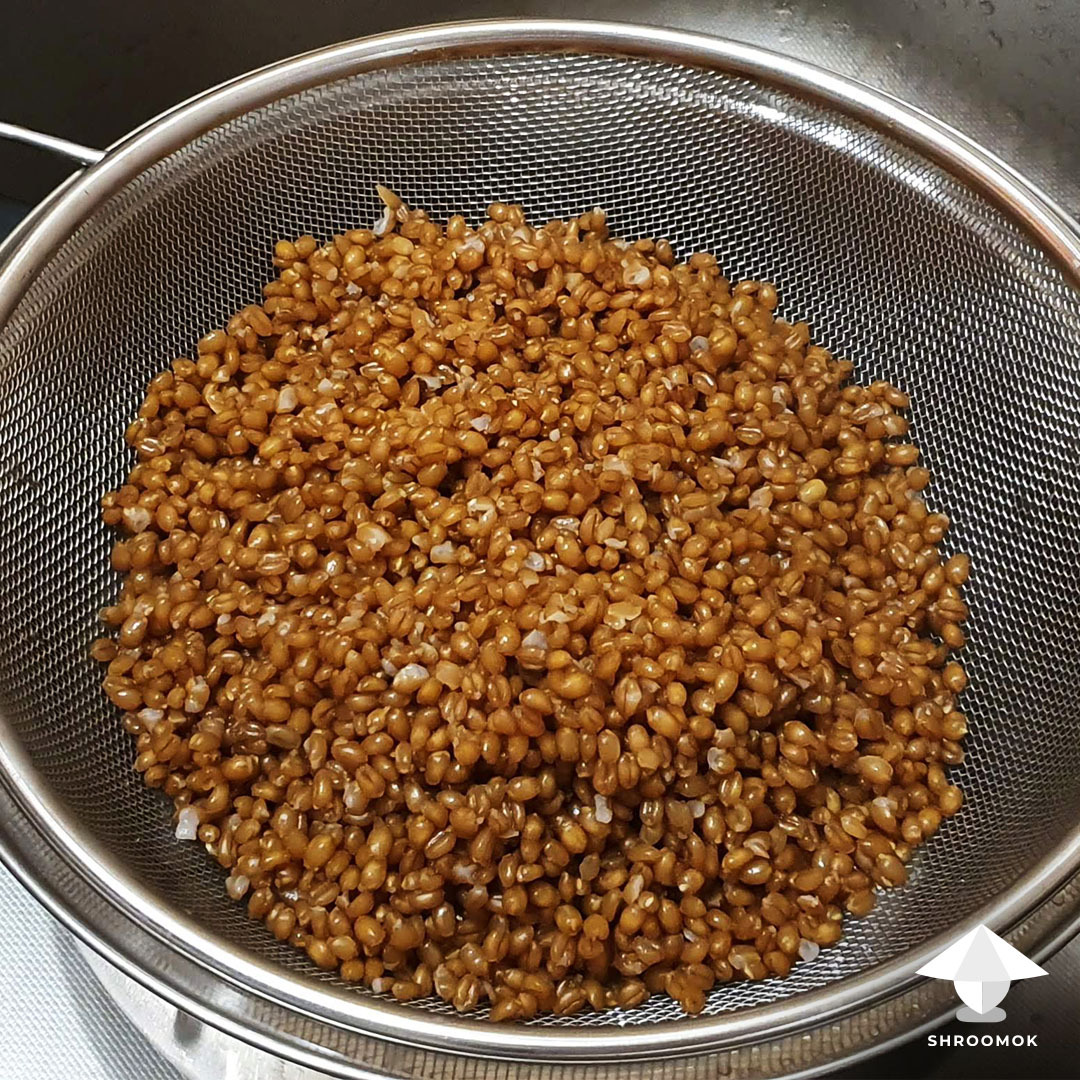
Benefits of gypsum for grain substrate
Gypsum aka Calcium Sulfate (CaSO4) prevents grain from sticking, making it loose and airy. Hence, less risks of bacterial contamination.
Add about a pinch per each jar or about ½-1 teaspoon of gypsum per every 3 lbs (1,5 kg) of already cooked grain substrate. A bit more or less is not critical. Mix it well and fill your jars/bags.
Gypsum on Amazon - $12.99
Vermiculite for preventing bacterial contamination in grain spawn
Vermiculite helps to absorb excessive water and protects your grain substrate.
The most common area affected by bacterial contamination is at the bottom of the jar/bag, because any excess of water in grain and condensation flows down.
To reduce such risk of bacterial contamination add 1-2 tablespoons of vermiculite at the bottom of each jar/bag before filling them with grain.
Then fill the jar/bag with prepared grain for further sterilization in pressure cooker.
Grain jars with thin layer (1 tbsp) of vermiculite at the bottom:
Vermiculite on Amazon - 8Qt, $13.75
Sterilization tips for grain substrate
It's easy to kill mold spores in grain. Most mold species die at 140F (60C) and higher for 40+ minutes. So that after PCing you won't have molds in the grain for sure.
To kill bacteria we need the temperature above boiling point (240-250F or 115-120C). To gain such high temperature we need high pressure (13-15 PSI). That's why we use a Pressure Cooker/Canner or Autoclave for 1.5-2.5 hours, depending on the pressure in your device.
The most common cases where mushroom growers fail on this step are:
1) Not enough processing time. Typically the recommended time for sterilization in a pressure cooker or autoclave is 1,5 hours at 15 PSI. As long as the internal temperature of the substrate reaches those sterilization temperatures it will be good to go 2-2.5 hrs at 15 PSI.
However, if your PC is able to gain only 12-13 PSI you should add additional 30-60 mins to your sterilization time to be sure of the result. Pressure and time correlation described on the chart.
❗️Make sure you have enough water in the PC to run that long.
❗️Don't forget to put the metal rack at the bottom of your PC.
Don’t open the PC right after the sterilization process. Let your jars/bags cool down to room temperature inside the Pressure Cooker to avoid excessive condensation and possible drawing of dirty air through the air filter.
2) Overloading the Pressure cooker with grain bags. PC sterilizes by steam. How does a pressure cooker kill bacteria? The heat that a pressure cooker delivers via pressurized steam (over 212F or 100C!) kills bacteria and other microorganisms by causing the organisms' structural proteins and enzymes to loose their shape in an irreversible way, denaturing and coagulating them and making them nonfunctional. If the PC is fully packed, it takes longer for that steam penetration to be effective (for gaining effective temperature inside the bag). Thus requiring a longer cycle to reach those temperatures.
Create some space between bags in the PC!
Jars are different in this case, as they are usually filled up to 3/4 of their volume and loosely packed in the PC leaving more space for easier steam penetration. For the first attempts I'd suggest to work with jars.
Question: This is safe right? 10 quart jars, the top three are all touching the PC. Or should i take one out?
Answer: You should be fine as long as steam can exchange in and out of the jars, I'd imagine your venting cycle would be nice and quick though. Make sure the top jar doesn't close the vent pipe in pressure regulator.
3) Weak lids. Screw the lid tight before PCing and screw them a little bit again while removing the jars from the PC. If the lid is opened (most likely for polypropylene 5PP lids), then the substrate should be sterilized again.
4) Wet air filters and water in jars. Cover the lids with aluminium foil to protect air filter.
5) Rusted lids. Don't reuse bad lids with rust.
Question about possibility of grain sterilization without pressure cooker
Please advise: if I don't have a Pressure Cooker to sterilize my grain, but I do have a multicooker, oven and big pot with lid. Can I sterilize my grain substrate just using a multicooker? Is it possible to sterilize grain in the oven or in pot without high pressure?
Answer: Heat treatment without pressure is less effective in order to deal with bacteria, but it's really possible!
🟠 Check out details here: Grain substrate sterilization without a PC
TL;DR
multicooker - steam mode or sterilization mode for 2-2.5 hrs
oven - recommended for corn sterilization for 2.5 hrs
pot with lid - double sterilization or tyndalization for 2 hours with 24-48 hours break between treatments
It’s fine to use these methods for the first attempts, but for long-term hobby Pressure Cooker is your best investment. You can find PC less than $100 on Amazon. Some models have "used" devices with good discounts.
🟠 Check out: Pressure Cookers on Amazon
Also search for used PCs on facebook marketplace in your location. Best of luck!
Inoculation
Let your jars/bags cool down to room temperature. It's fine to have some condensation water drops after sterilization.
Shake the jar gently to spread moisture in the jar/bag and inoculate it.
Colonization temperature dilemma for grain spawn
Mycelium colonize grain faster in a warm room or incubator at 77-84F (+25-29С). But the higher the temperature the faster bacteria growth. Cooler temperature slows down bacteria, but mycelium growth slows as well.
What is the best colonization temperature? For the first attempts with actives try to keep colonization temperature around 70-77F (21-25C).
I prefer 25-27C for P.Cubensis, P.Natalensis, Panaeolus and Magic Truffles like P.Tampanensis, P.Mexicana. For edibles like Lions Mane, Oysters, Shiitake about 18-23C.
❗️If grain is EXTREMELY WET bacteria spread faster than mycelium and spoil the grain even in low temperatures.
Here is an example of such wet bursted grains (all in one bag) that are prone to bacterial contamination:
Check if Air Filter really works for gas exchange
Make sure the air filter patch on the bag/jar is dry (especially after sterilization in PC) and not clogged (especially after break and shake) to allow mycelium to breathe. Sometimes wet grains stick to the air filter and block the gas exchange.
Question about not using an air filter
Question: Shroomok, but mycelium can grow without air filter, even in vacuum bags. Slower, but grow. We can skip using air filters and don’t worry about bacterial contamination. Isn’t it?
Answer: Yes, you are right, mycelium is able to grow (slower) without an air filter. But it doesn’t mean we can avoid bacteria though. Cutting off the air completely (or not using the air filter) suppresses aerobic bacteria growth (germs that need oxygen), but creates conditions favorable for the development of anaerobic bacteria (germs that can survive and grow without oxygen at all).
Mushroom cake contaminated by bacteria
Serious sign of mushroom cake contamination is a bad odor: sweet, sour, rotten, ammonia.
Why does it happen?
Grain spawn for Spawn to Bulk had been contaminated with bacteria.
Grain spawn jar/bag was used too early. Bald uncolonized grains (without mushroom mycelium) are prone to bacterial contamination.
Soaking mushroom cake in water for too long, especially in a hot season.
Solution:
If you feel a strong smell, toss this cake.
Soak mushroom cakes in water cake for 2-4 hours, no more.
Mycelium is able to fight with mild bacterial contamination. Just wait.
Question about bacterial contamination in grow kit
Question: My mushroom cake (grow kit) has this during the growing season and I have no idea what it is. What's the best course of action? Toss it and start over?
Shroomok: Seems like bacteria contam. Any smell?
No weird smells. How should I go about it?
Shroomok: Mycelium created a border around the contaminated area and can literally eat it. You can do nothing. Keep the temperature around 70F (21C) and let shrooms grow. Bacteria NOT mold ;) If it was mold I would say you are screwed, but mycelium already can fight such bacterial patches quite well, in comparison to say, Trichoderma or Penicillium.
I'm using a storage building for my cakes. Is the whole building contaminated? Will spraying everything with lysol help? Do bacteria contaminate the room and all other cakes the same as mold?
Shroomok: Bacteria don’t spread in the air like mold spores and don’t move from cake to cake as easily as mold. Bacteria reproduce by cell division in a local area (in grain, mushroom cake) and can be introduced by your hands, tools, contaminated genetics, or settle on the surfaces.
To kill bacteria cells in grain substrate we use heat treatment - sterilization over 100C for 1.5-2.5 hours.
To disinfect tools we use sterilization, lysol/isopropyl alcohol, UV lamp, fire treatment.
To disinfect surfaces before mycological procedures we wipe them with lysol/isopropyl alcohol.
To clean up jars and tubs you can wash them with Chlorox.
Killing mold spores in substrates is easier. We need only 140-160F (60-70C ) and higher for about 40 mins. But the main problem is that mold spores easily spread in the air and contaminate other cakes/jars. Moreover, such spores settle on the surfaces, curtains, carpets, furniture, can spread in the by air currents and affect your future grows for years. That's the main difference between molds and bacteria!
Case - bacterial contamination or something else
Grower: Anyone got a contam ID on this caramel/corn looking smth I got over here? (It's not a corn substrate)
Shroomok: When did it happen? After rehydration (soaking cake in water)? Either bacterial contamination spreading or Mycogone (Wet Bubble) contamination. Both contams might have rotted smell.
Grower: Yes it was after a good soak! :(
Question about adding sugars to bulk substrate
Question: Hey guys, I need some input on my bulk substrate: coco coir, calcium carbonate, vermiculite, calcium sulfate, spent coffee grounds. I've heard some people also add sugar to their bulk substrate. What do you think?
Answer: Adding any kind of sugar in bulk substrate is a bad idea, as it would invite bacterial contamination! For mushrooms more nutrients doesn't mean better. Highly nutrient substrates prolong colonization phase (mycelium growth) and brake the fruiting phase.
Mushroom fruit bodies contaminated by bacteria
The most common bacterial disease that appears on mushroom fruit bodies is Bacterial Blotch, also known as Brown Spot or Brown Blotch. This disease has far-reaching economic implications for mushroom farms worldwide, primarily due to its impact on quality of edible mushrooms, though it poses no health risks to humans.
Bacterial Blotch can be caused by various pathogens within the Pseudomonas genus, characterized as aerobic, gram-negative soil bacteria.
Question: Why is the cap this way?
Shroomok: Probably it's Bacterial blotch disease (Pseudomonas) on the late stage. There were water drops on the shroom, then this area became dark brown and then turned black. Also deformation is great sign of such bacterial contamination.
On early stages of Bacterial Blotch disease mushrooms look like this:
It's not a big problem, possible to deal with it. I've posted more photos, detailed guide and treatment tips in a separate guide.
🟠 Check out: Bacterial blotch disease: causes, symptoms, prevention, treatment and photos
Bacteria on swabs and spore prints
If you want to save the genetics for your mycological purposes by making spore swabs they should be dried prior to being packed for storage. If packed wet (right after making them), bacteria could form. Further inoculation will be accompanied with bacterial contamination.
The same with spore prints. You can see some kind of condensation water drops on the spore print right after removing the mushroom cap.
Let them dry, then put in a zipbag.
Wet print/swab = 99,9% bacterial contamination.
Liquid Culture contaminated by bacteria
The main signs of bacterial (also could be yeast) contamination in Liquid Culture are:
Smell through the filter. Sweet-sour, rotted, ammonia, cider, fermentation odors are obvious signs of contamination. Yeasty-cheesy-bakery odors are most likely from yeast contamination.
Cloudy liquid media. If your liquid culture is not clear and transparent, it may indicate bacterial contamination.
Fermentation bubbles, especially after shaking the jar. Similar to a foamy beer. The bubbles become more intense with each shake. This is an exact sign of bacterial or yeast contamination.
Why does this happen?
Contaminated genetics for inoculation (syringe or agar sample).
Poor sterilization of liquid media.
Poor sterility routine before/during inoculation process.
Solution: Toss such LC samples and try again.
Prevention measures:
Increase sterilization time in pressure cooker or autoclave. 40-50 mins instead of recommended 30 mins.
Inoculate LC media with contam-free agar sample or LC culture. Don't use spore syringe for LC media inoculation
Agar contaminated by bacteria
Texture. Bacterial colonies appear as tiny wet slimy dots on the agar surface or wet slimy areas without specific shape.
Color. Most common in mushroom growing are creamy, beige, yellow, golden-yellow circles. Less often (in mushroom growing) orange, brown, red, pink, green, green-blue.
Speed of growth. Bacterial colonies grow faster on agar media than mushroom mycelium.
Possible reasons of Agar contamination
Contaminated spores (spore print, spore syringe, spore swab) germinate on agar with bacterial signs.
Poor Agar media sterilization. Increase sterilization time to 40-50 mins.
Poor sterility routine while working with agar. Clean all surfaces with alcohol, wear gloves and face mask, use UV lamp for surfaces. Desinfect all tools. Still Air Box, or Laminar Flow Hood, or Fan Filter Unit is required for agar work, but they are mostly about protection against molds.
How to clean up agar plate with bacterial contamination
Problem: Spores germinate with bacterial contaminants (“slime”)
Cause: Contaminated spores (spore print, spore swab, spore syringe)
Solution:
While working with agar it is possible to clean up the culture by transfering healthy (or relatively healthy) sample to new agar plate. Sometimes you need to make 3-10 transfers to get contam-free mycelium.
Prepare antibiotic media or peroxidated media. “Sandwich” spores or relatively healthy sample between two layers of antibiotic media. Isolate mycelium when it appears on the top surface.
Choosing agar sample for transfer
Let's take a look at this agar plate:
Red area - apparently has bacterial slime. Green area is opposite to contaminated sample, has good healthy mycelium for transfer to another plate.
One more example. Red circles - bacterial slime, green circles - healthy areas for Agar to Agar transfer.
Question: Hi all! I ran some tests on some leftover spores I was storing in the refrigerator. I tested them on malt extract agar. Clearly, some of these are contaminated. But I was just curious, is anyone able to identify what type of contamination? Not important, just my own curiosity. I’ll toss the contaminated spores. Thanks everyone!
Shroomok: Lots of species look alike on agar. Any id by photo is always approximate identification. I've edited your original photo and can tell you the next:
Agar plate 1
green circle - might be blue-green mold Penicillium
gray circle - questionable, maybe early mold, but hard to say so far
blue circles - healthy mycelium areas for transfer if you want to clean the culture and save genetics
Agar plate 2
small yellow dots throughout the plate - good example of bacterial contamination
blue circles - healthy areas for transfer to new agar plate
Agar plate 3
slimy gel-like growth throughout the plate - good example of bacterial contamination
Agar plate 4
green circle -blue-green mold Penicillium
Prepare selective agar media
If you want to save your culture or if you work with wild contaminated samples try to make a few transfers to selective agar media:
Selective agar media are used to inhibit the growth of certain contaminants (bacteria, yeast, mold) while allowing mushroom mycelium to grow. Additional nutrients can be added (malt extract, potato based recipes), but in order to reduce bacterial growth better to proceed without nutrients at all to inhibit competitive microorganisms completely in non-nutrient Water Agar.
Water Agar - non-nutrient agar medium based on water (500 ml) and agar (10g)
Antibiotic Agar - antibiotics are added to inhibit the growth of specific bacterial contaminants or broad-spectrum antibiotics are used for a wide variety of bacteria and yeasts. Veterinary antibiotics can be used.
Peroxidated Agar - 3% hydrogen peroxide (H2O2) is an affordable alternative for antibiotics. H2O2 kills bacteria + fungal spores, inhibiting the growth of yeasts. Can’t be used for spores propagation!
🟠 The list of antibiotics, when to add them (before or after sterilization), how and how much to antibiotics check out here: Antibiotic Agar
🟠 How to prepare Peroxidated Agar check out here: Hydrogen Peroxide Agar
Agar sandwich isolation method
One way of cleaning a bacterially contaminated culture is by sandwiching it between two layers of antibiotic agar media.
The agar sandwich method is a great way of separating mushroom mycelium from bacteria. It allows you to seal the contaminated mycelium between the 2 layers of agar. The mycelium will grow through the top layer of agar, but the bacteria will remain in the middle layer. This gives you the opportunity to transfer the surface mycelium to a new plate, ensuring that the bacteria are removed.
There are a few options on how to proceed.
Agar Sandwich Method 1
Prepare 2 plates with Antibiotic Agar or Peroxidated Agar. The agar thickness for plate №1 should be around 3-5 mm, for plate №2 - 2-3 mm.
Take the contaminated plate and choose the healthiest part of mycelium from the wedge, as far away from the bacterial contamination as possible.
Cut/scrape it with an inoculation loop or scalpel. Try to cut/scrape mycelium without too much agar.
Transfer the rescued sample to Antibiotic Agar or Peroxidated Agar (plate №1).
Cut the 1 inch x 1 inch square sterile antibiotic/peroxidated agar from plate №2.
Put it over the rescued sample to cover the mycelium under the agar layer.
Incubate it at 75F.
In 3-7 days you’ll see mycelium growth on the top surface.
Transfer mycelium from the top to the new agar plate.
Agar Sandwich Method 2
Pour sterilized agar (temperature should not exceed 33C) over the contaminated agar culture you are trying to clean.
Incubate at 75F.
In 3-7 days you’ll see mycelium growth on the top surface. Transfer mycelium from the top to the new agar plate.
Agar Sandwich Method 3
Use sandwich tek from the very beginning (for spore germination).
“Sandwich” spores for propagation between two layers of Antibiotic Agar media.
Isolate mycelium when it appears on the top surface.
❗️Don’t use Peroxidated Agar for spores germination!
Afterwords
Have questions? Ask in the comments below or join Shroomok community on Discord or Reddit.
If you find this guide helpful, please support me on buymeacoffee
Check out more photo examples and cases in photo gallery below.
Have a happy growing and healthy shrooms!
Shroomok's choice


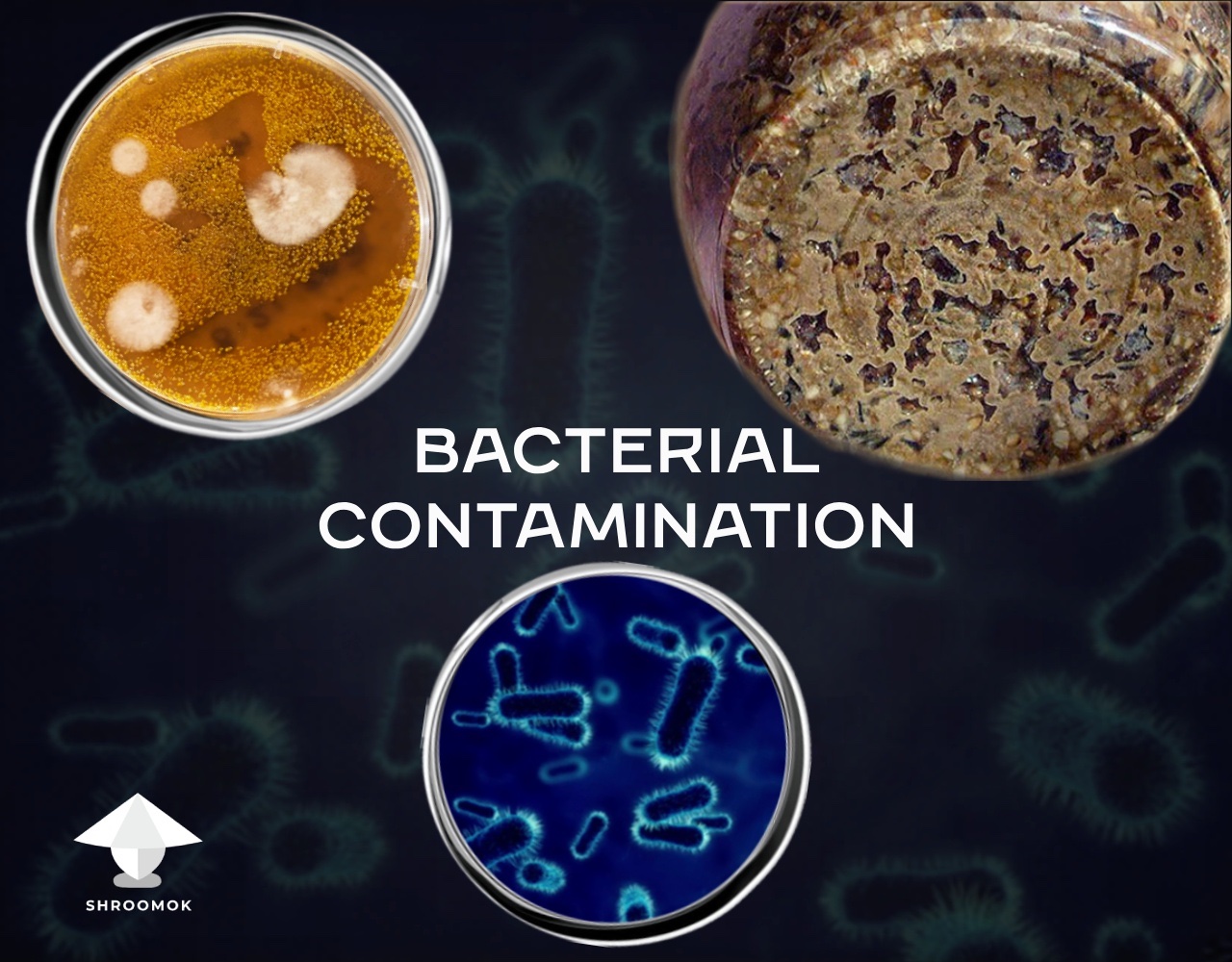
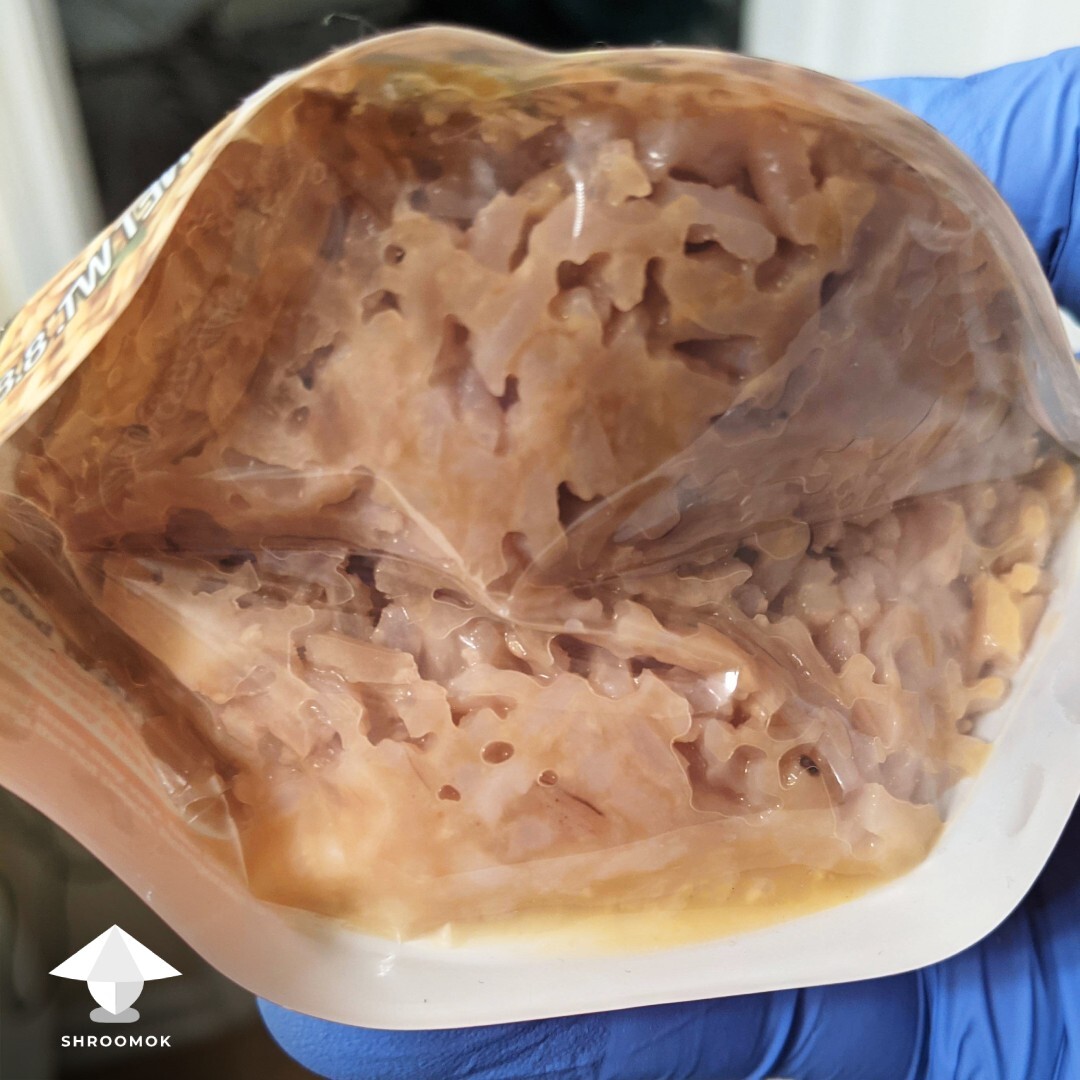
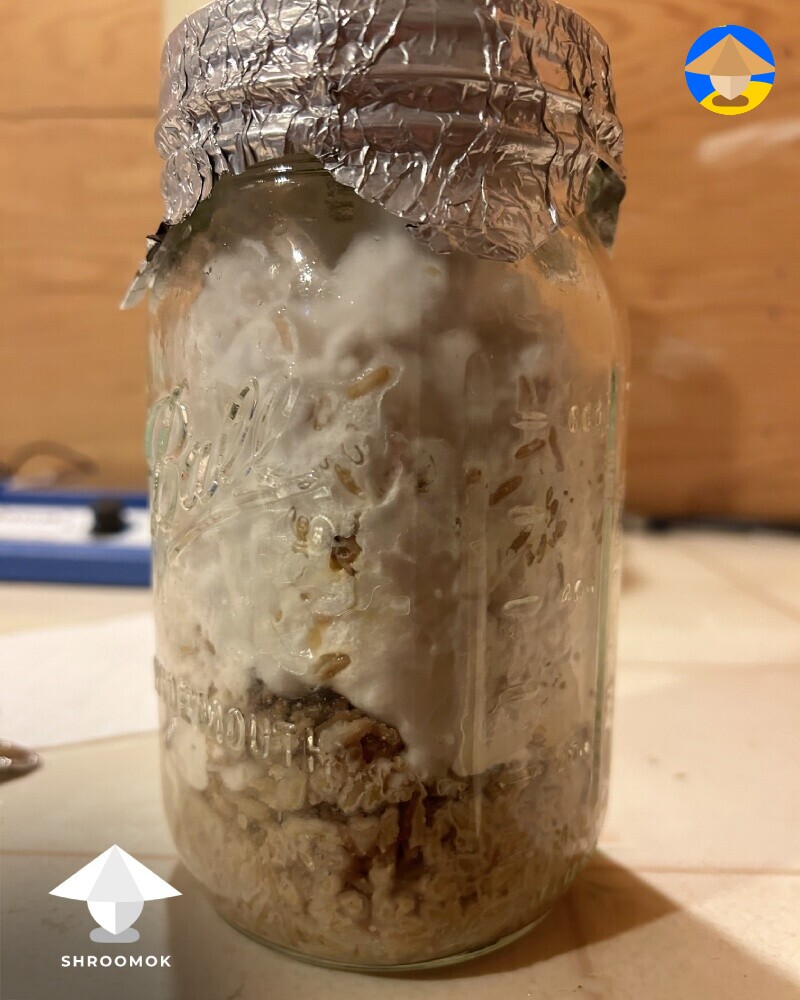
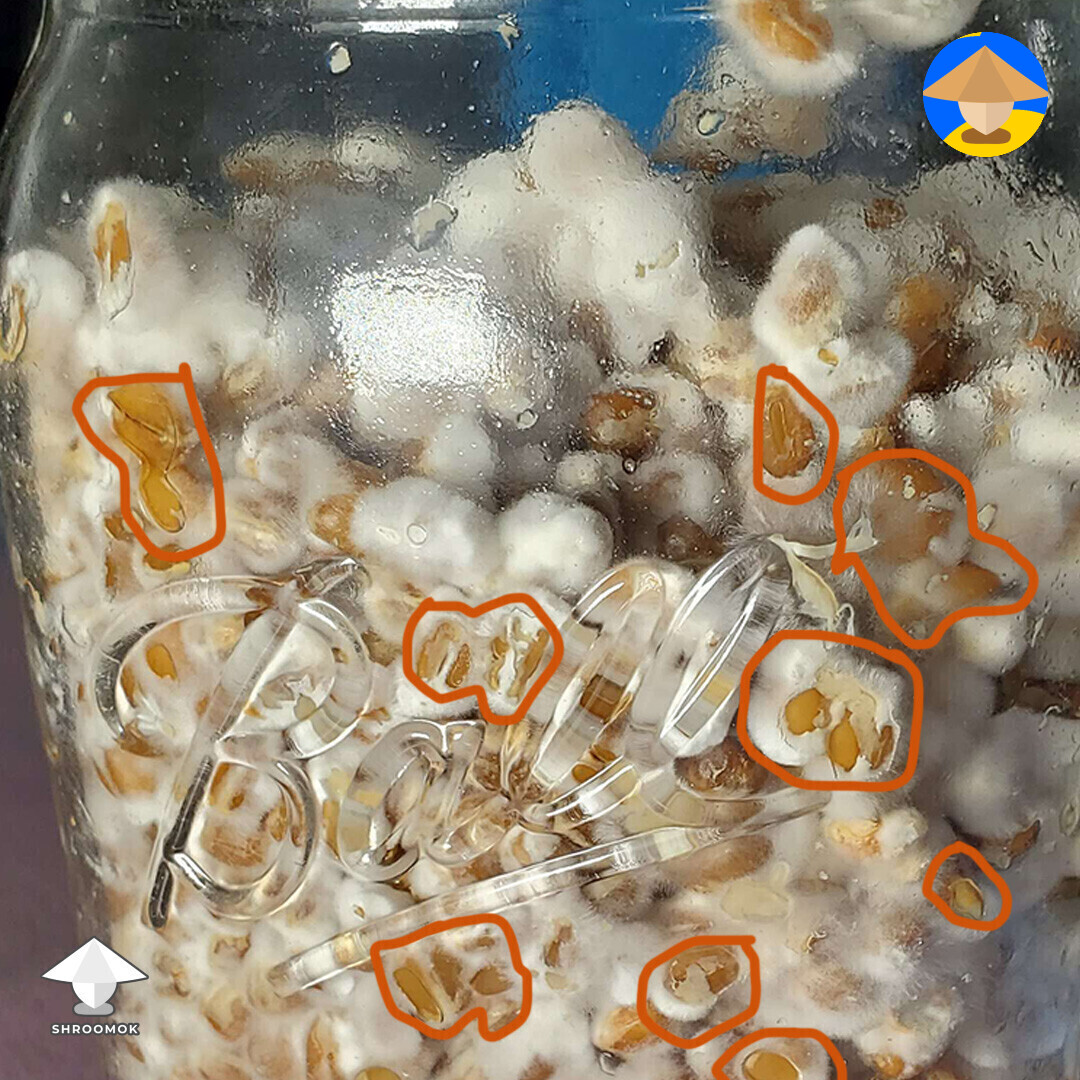
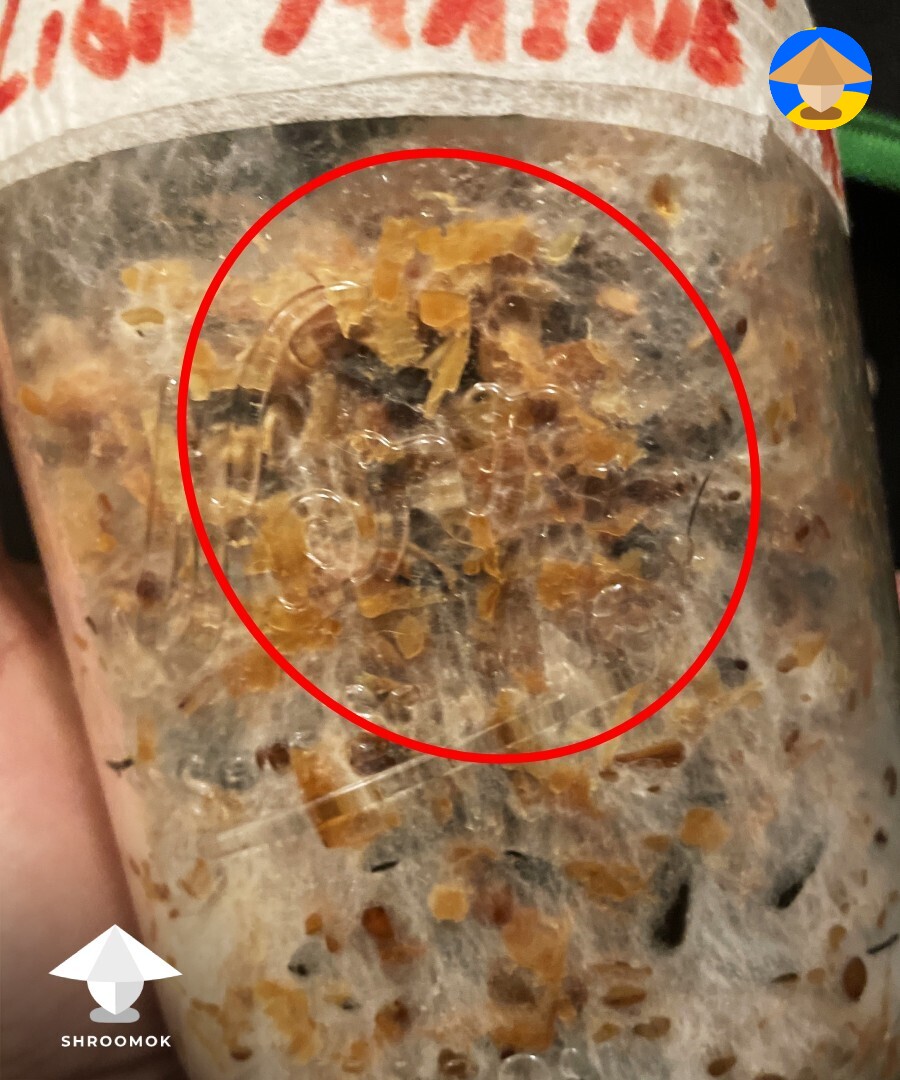
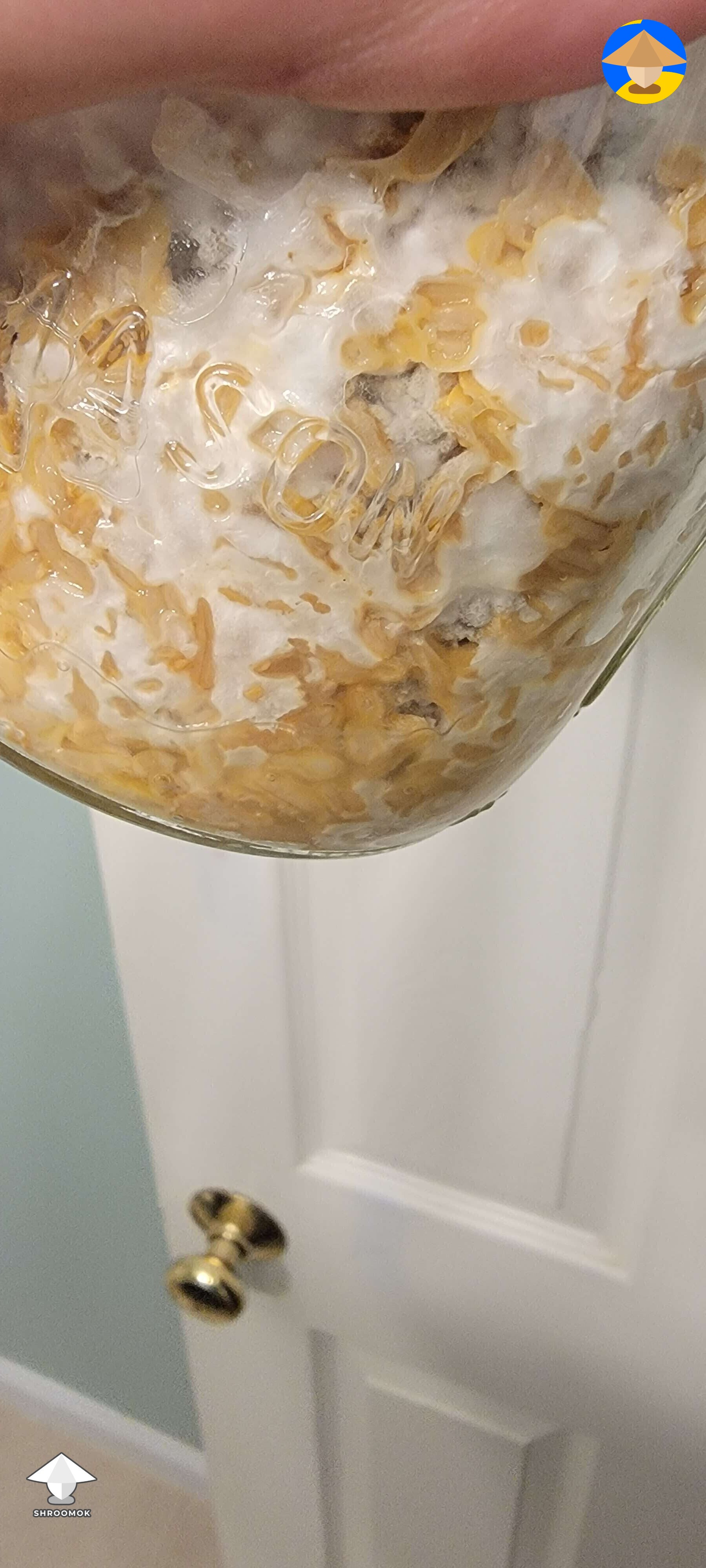
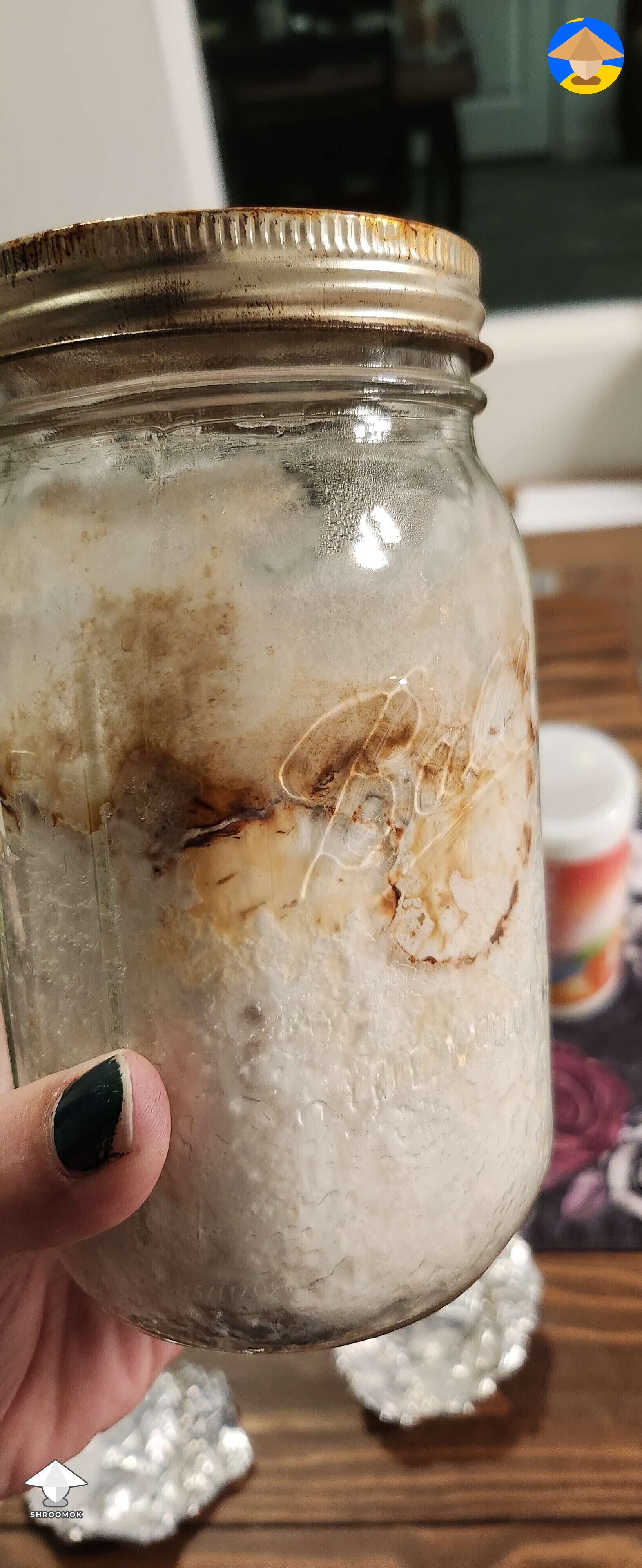

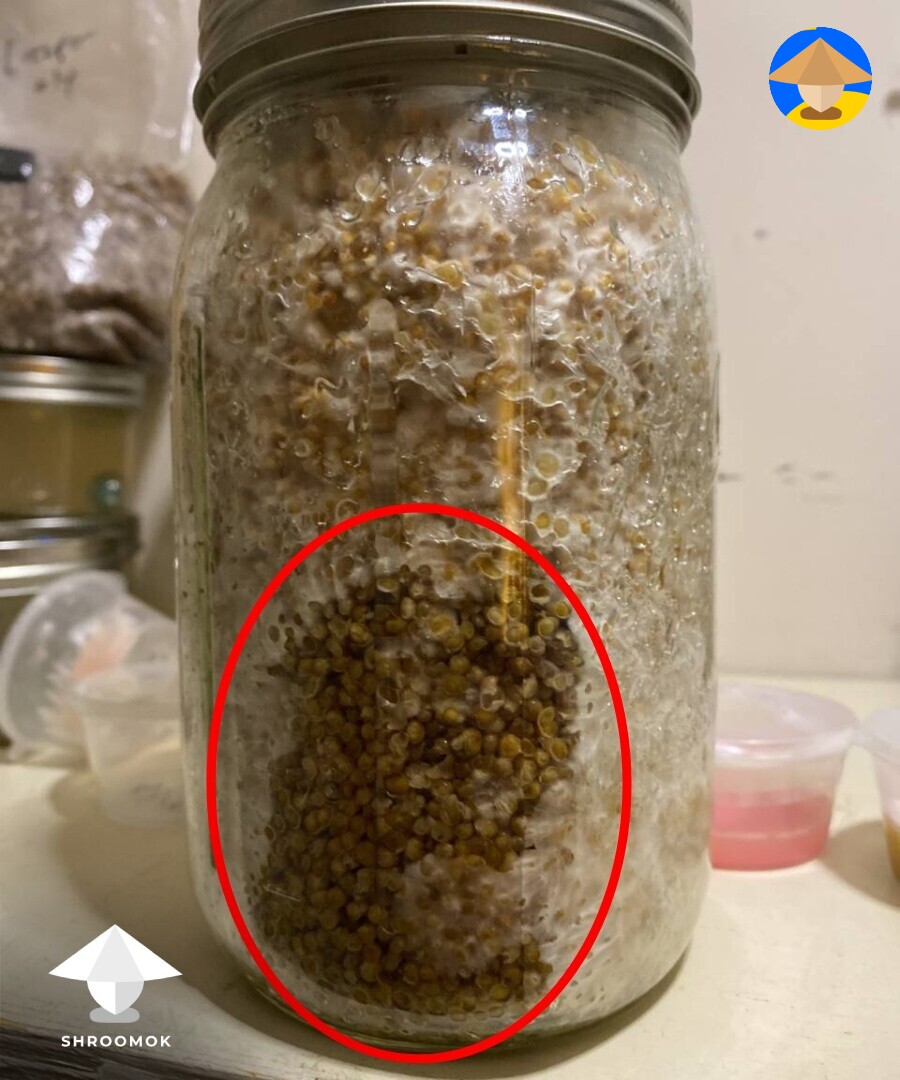
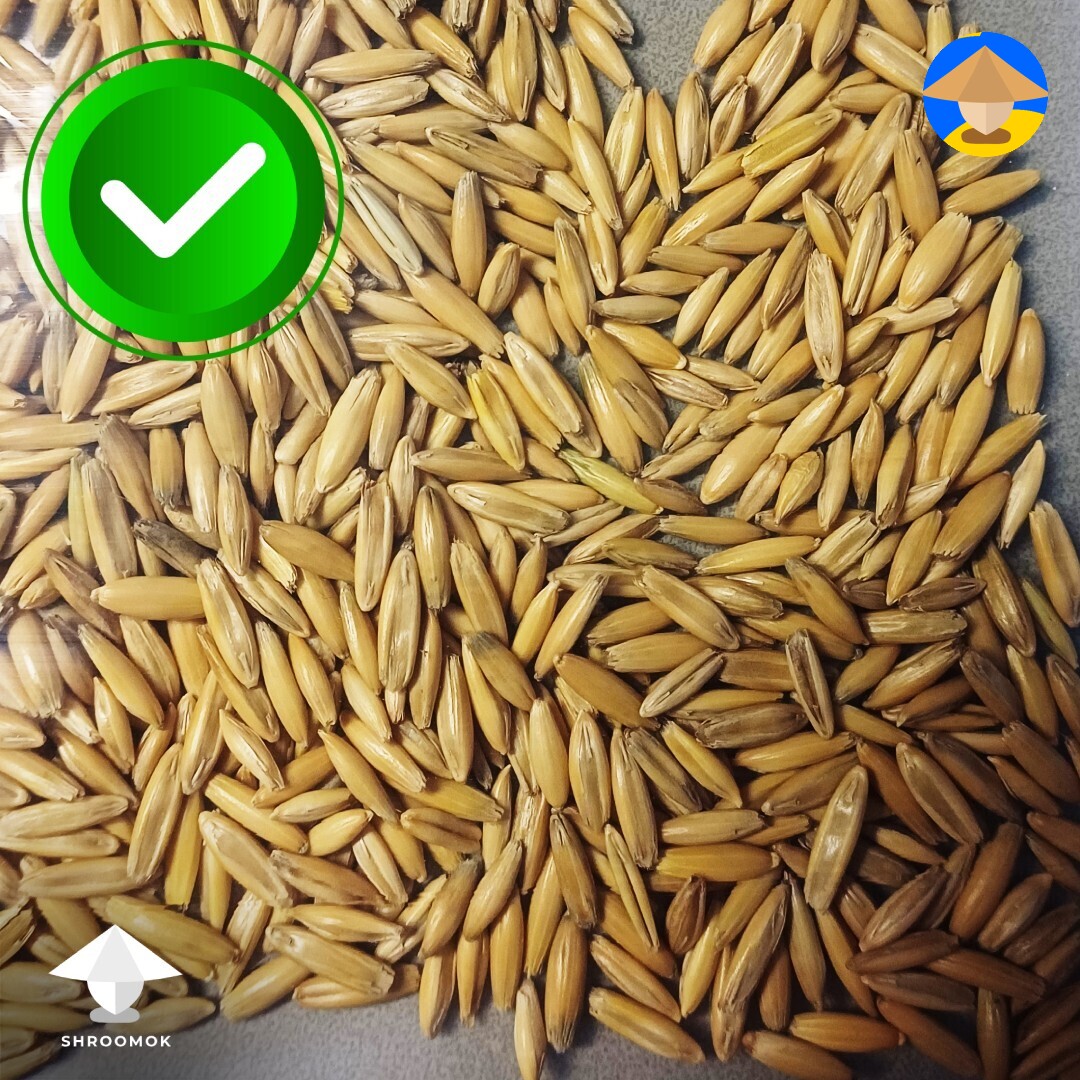


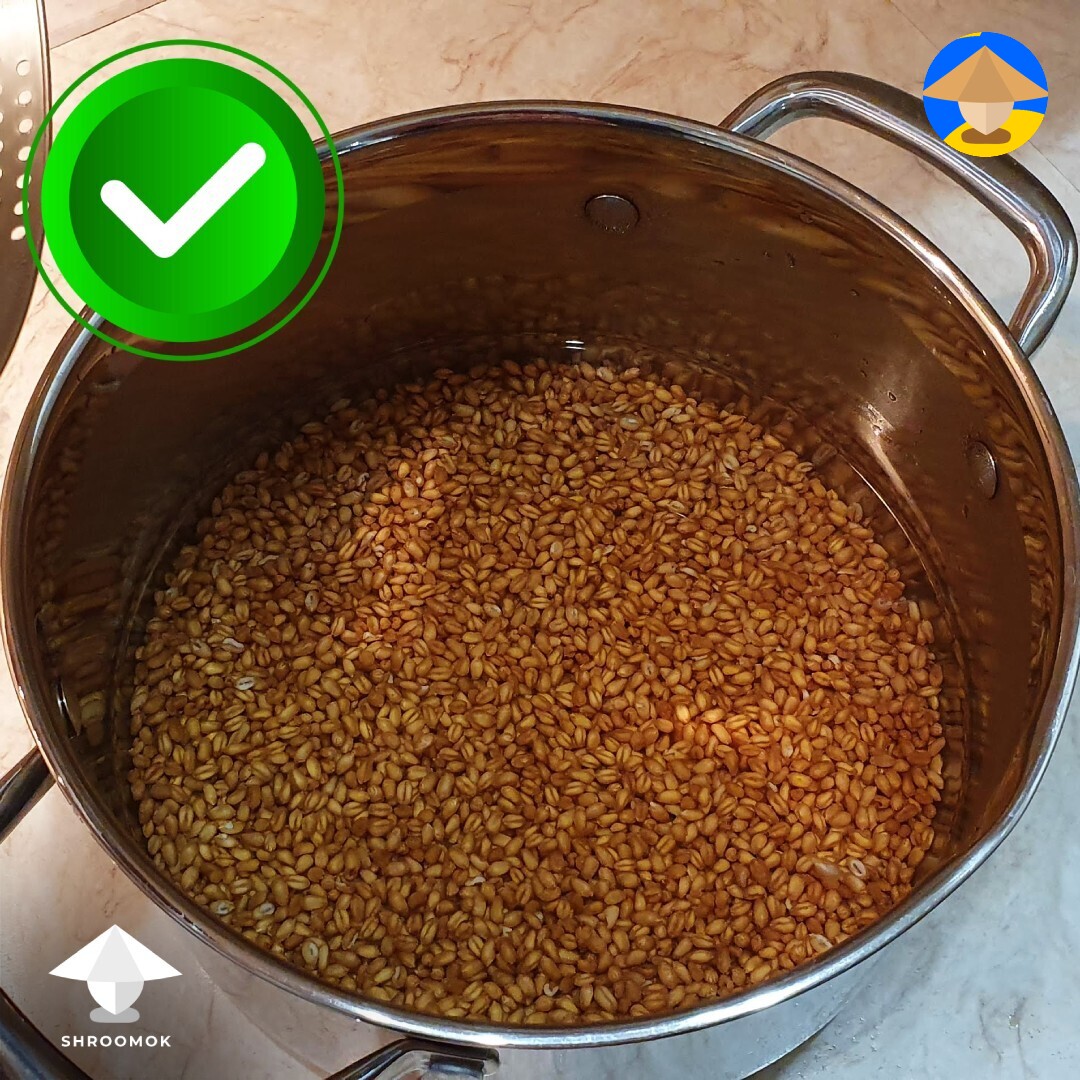
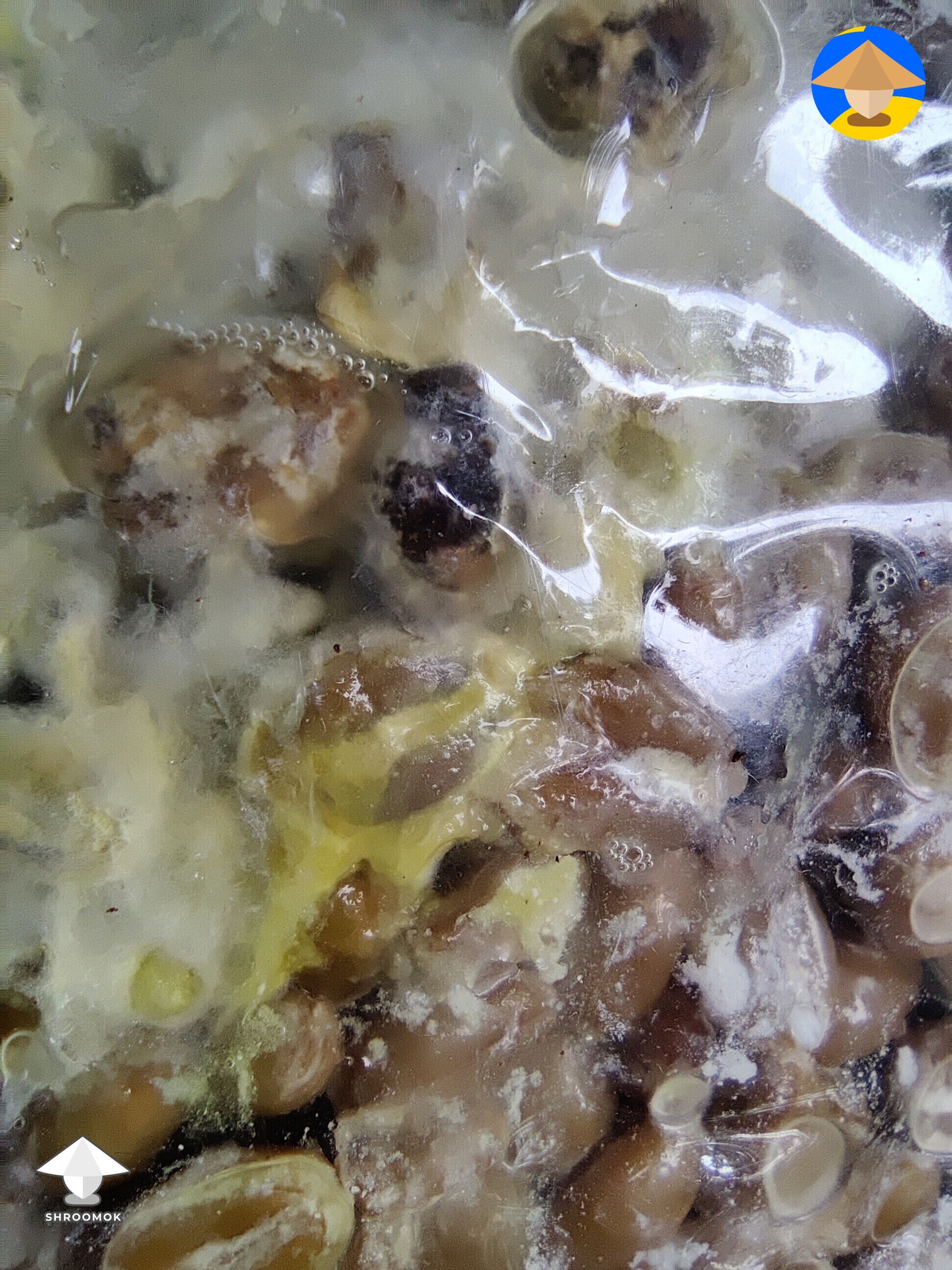
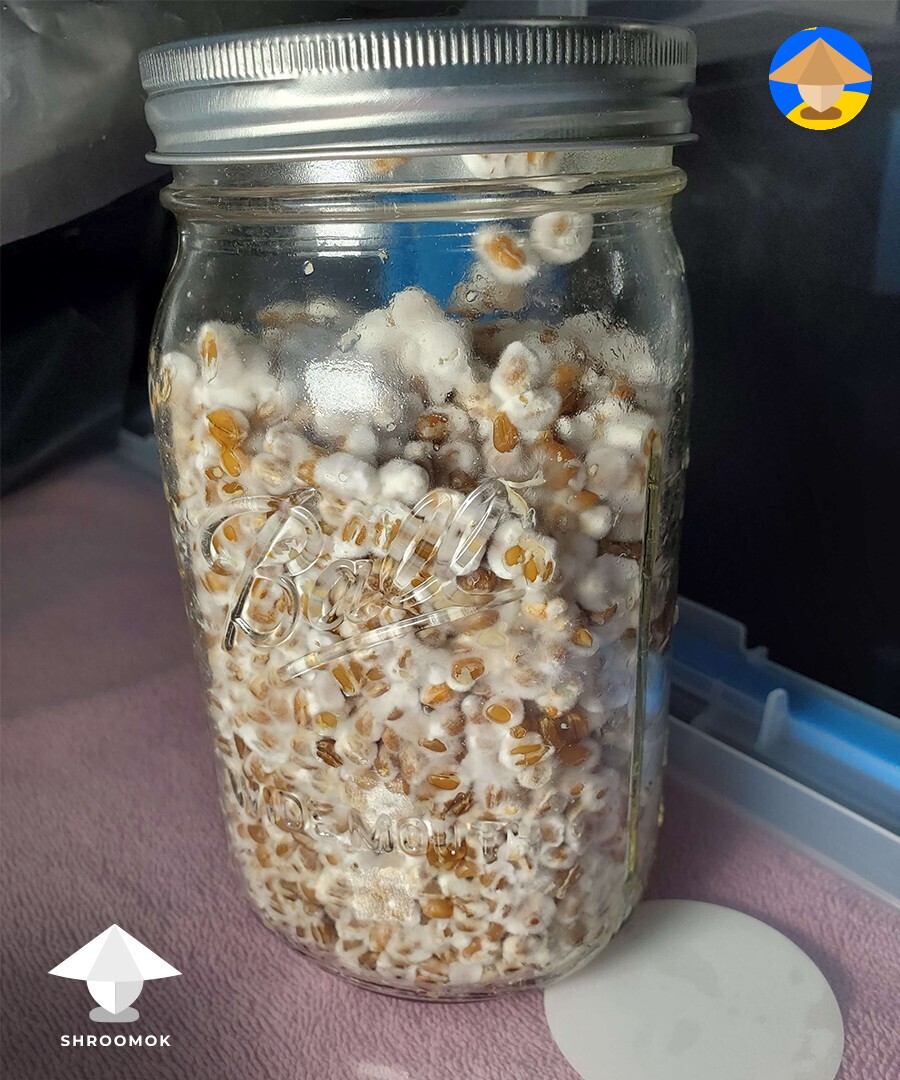
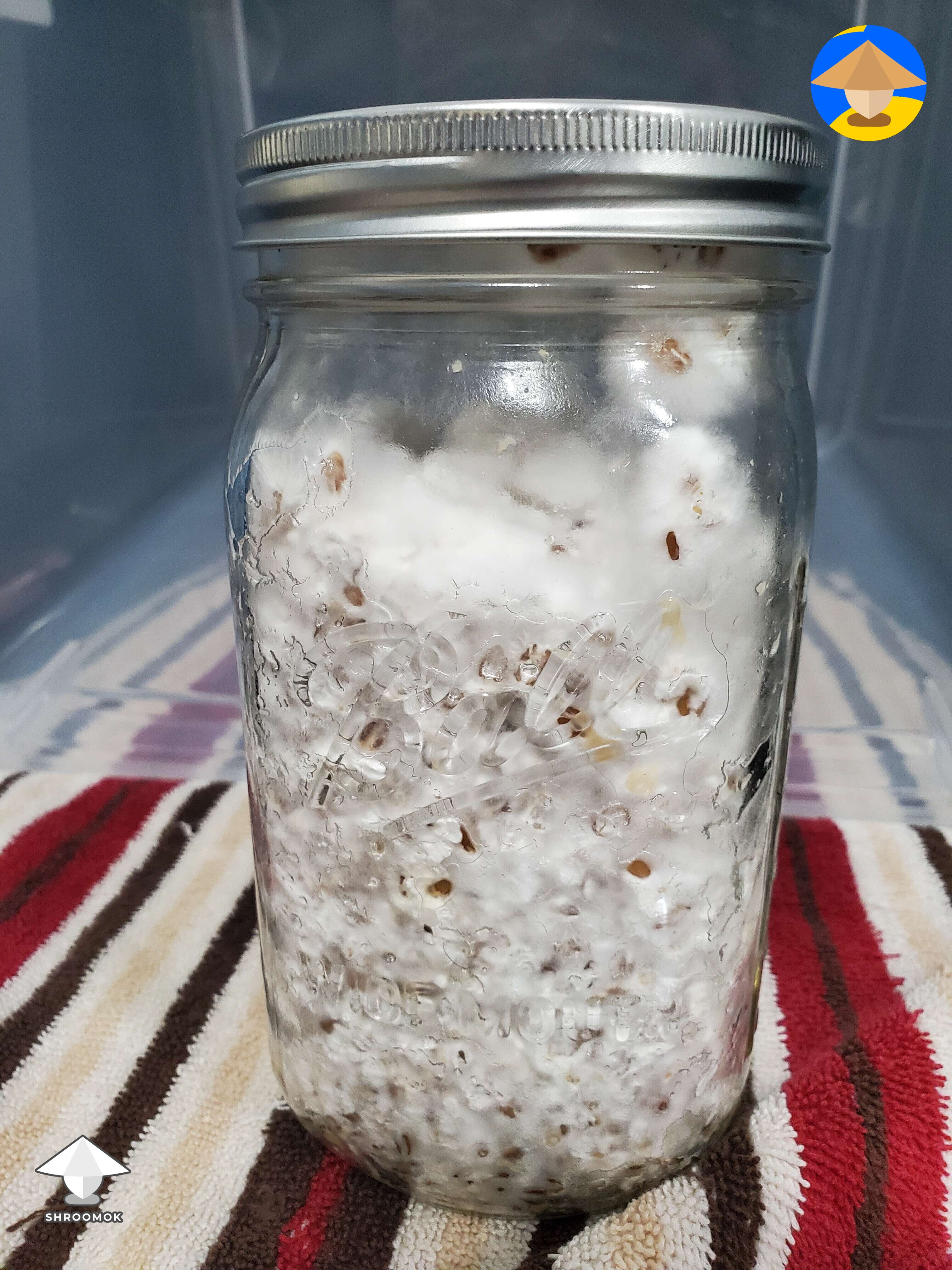
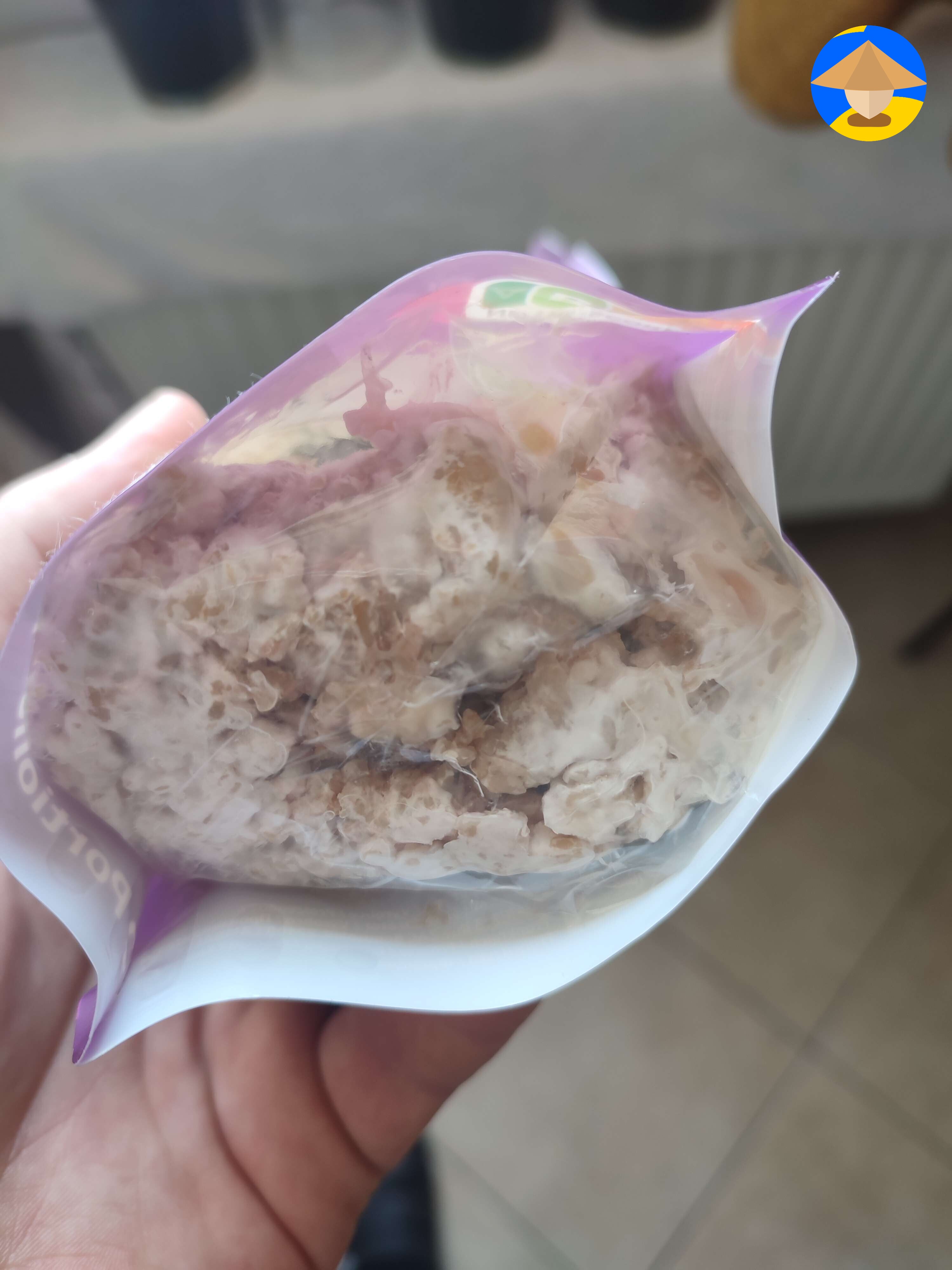
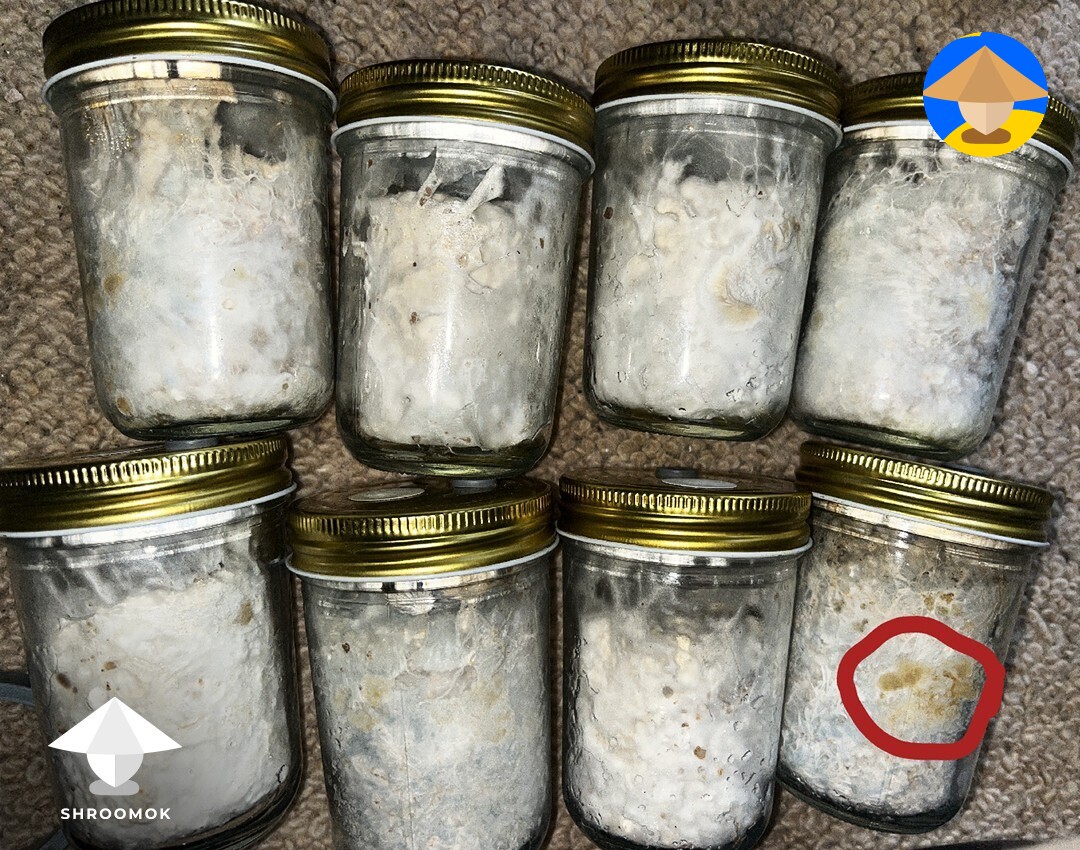
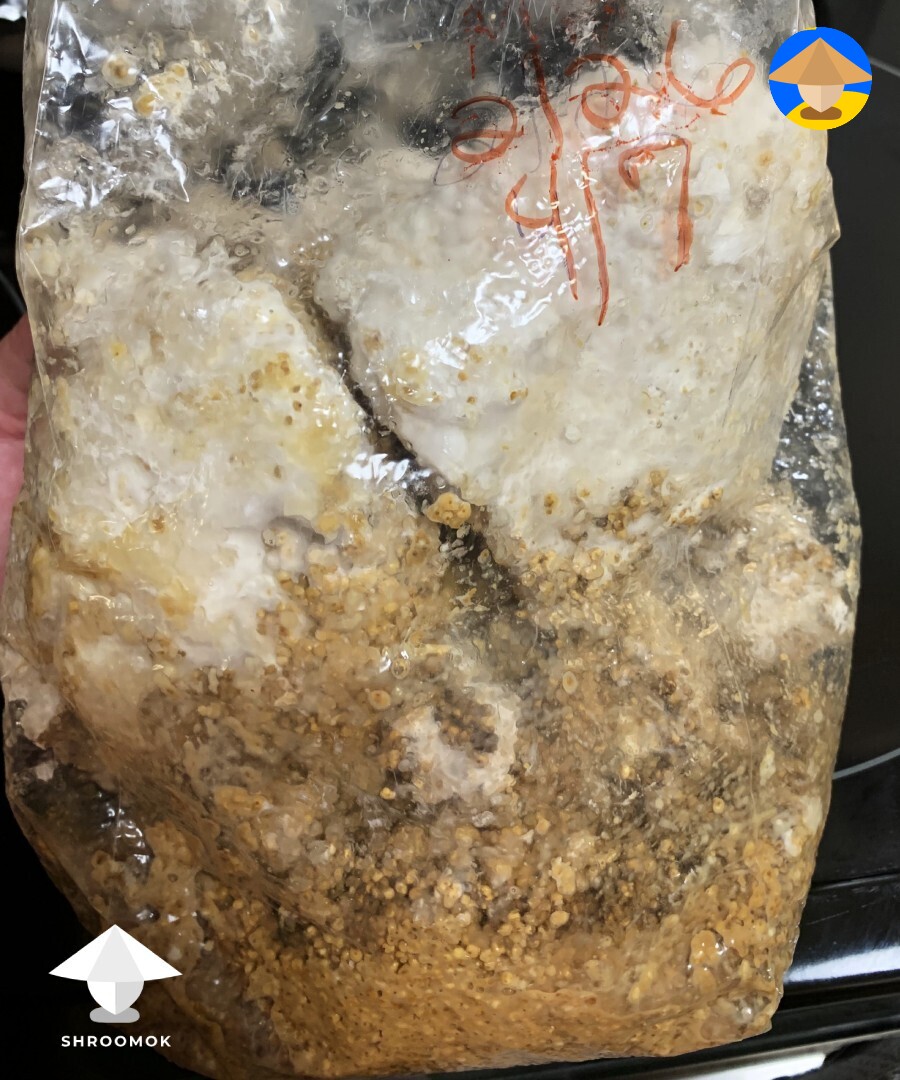
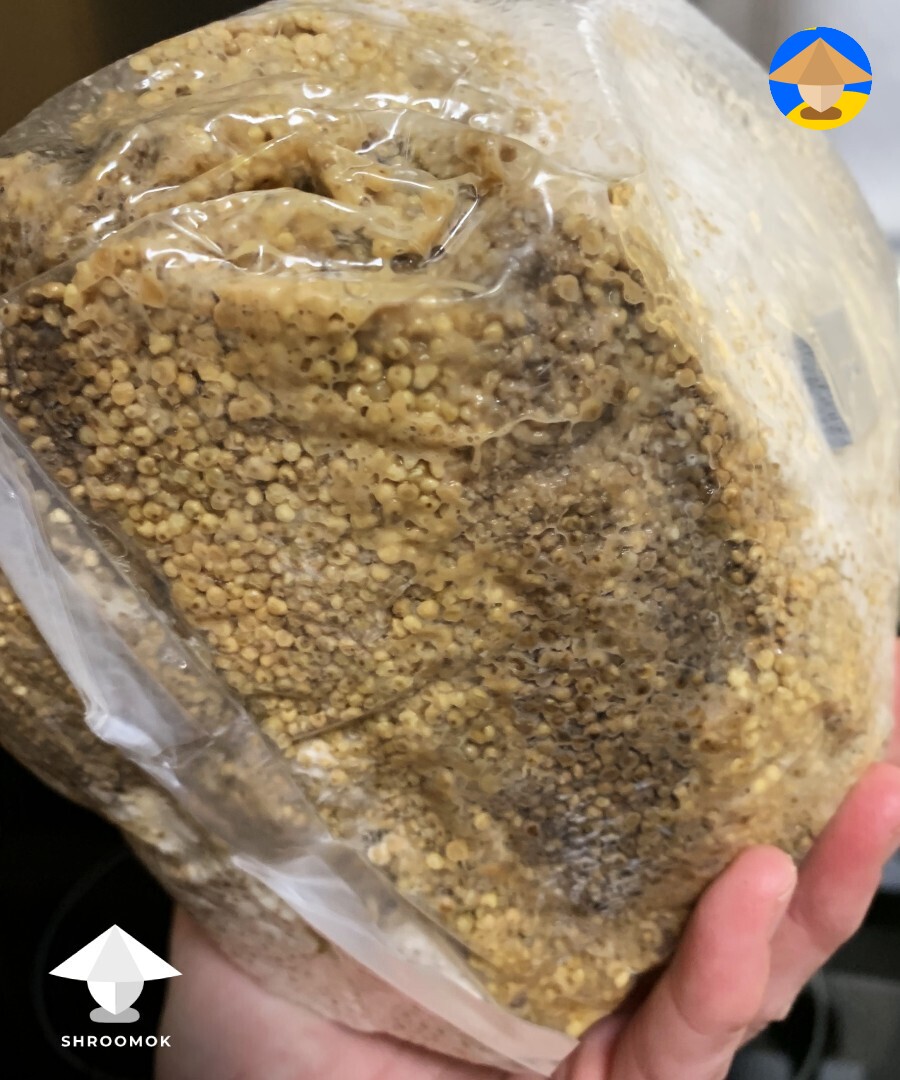
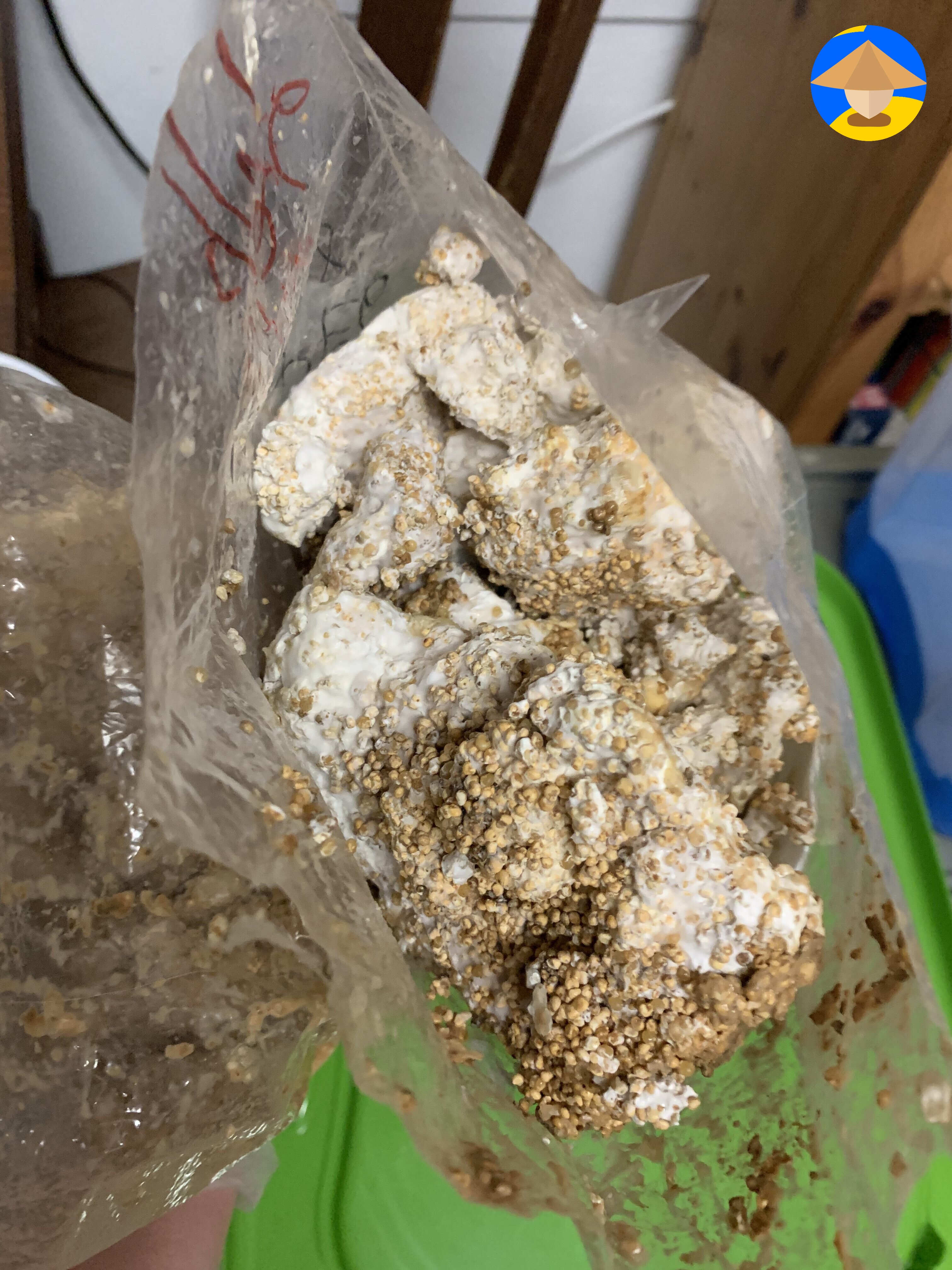
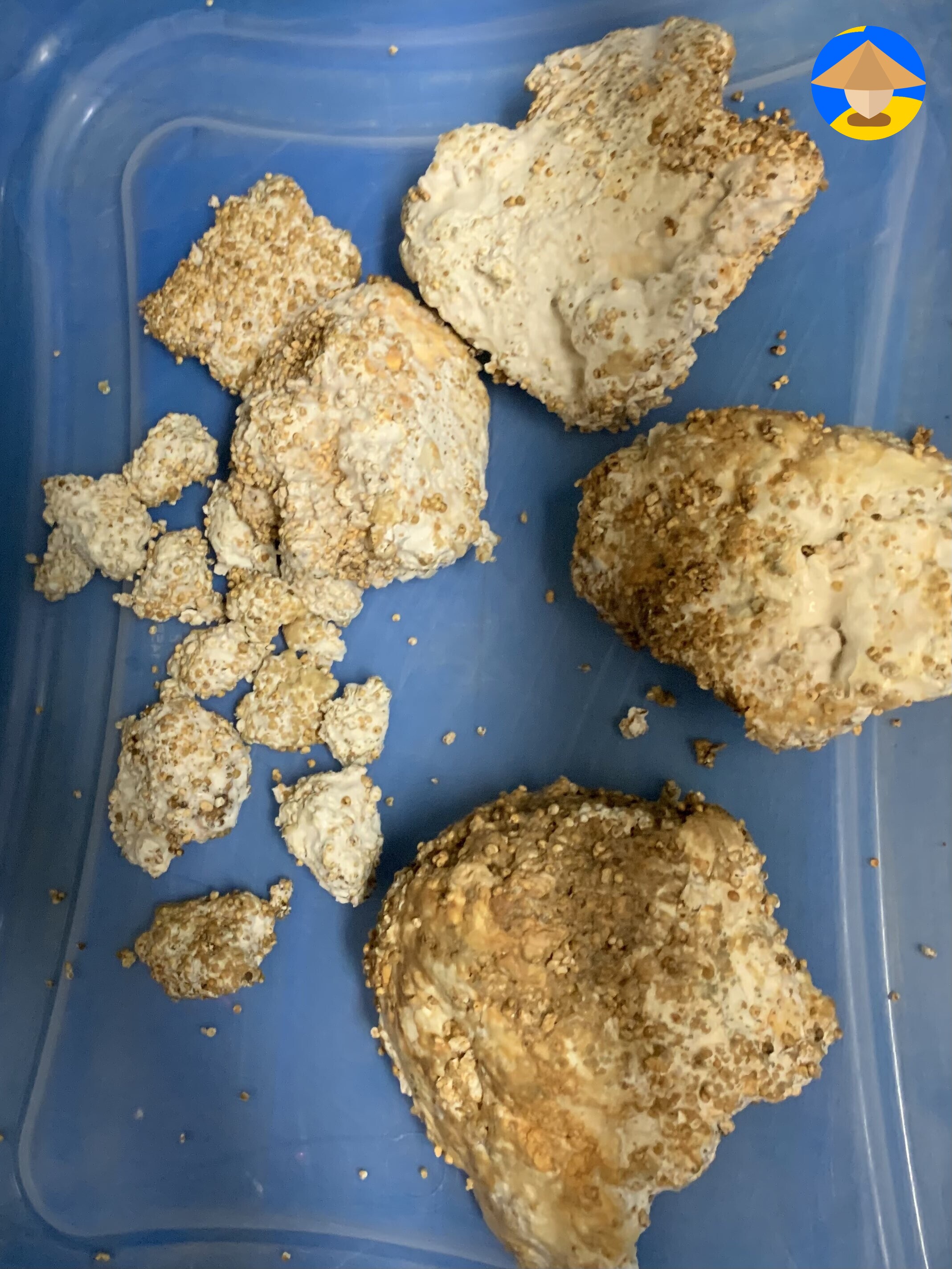
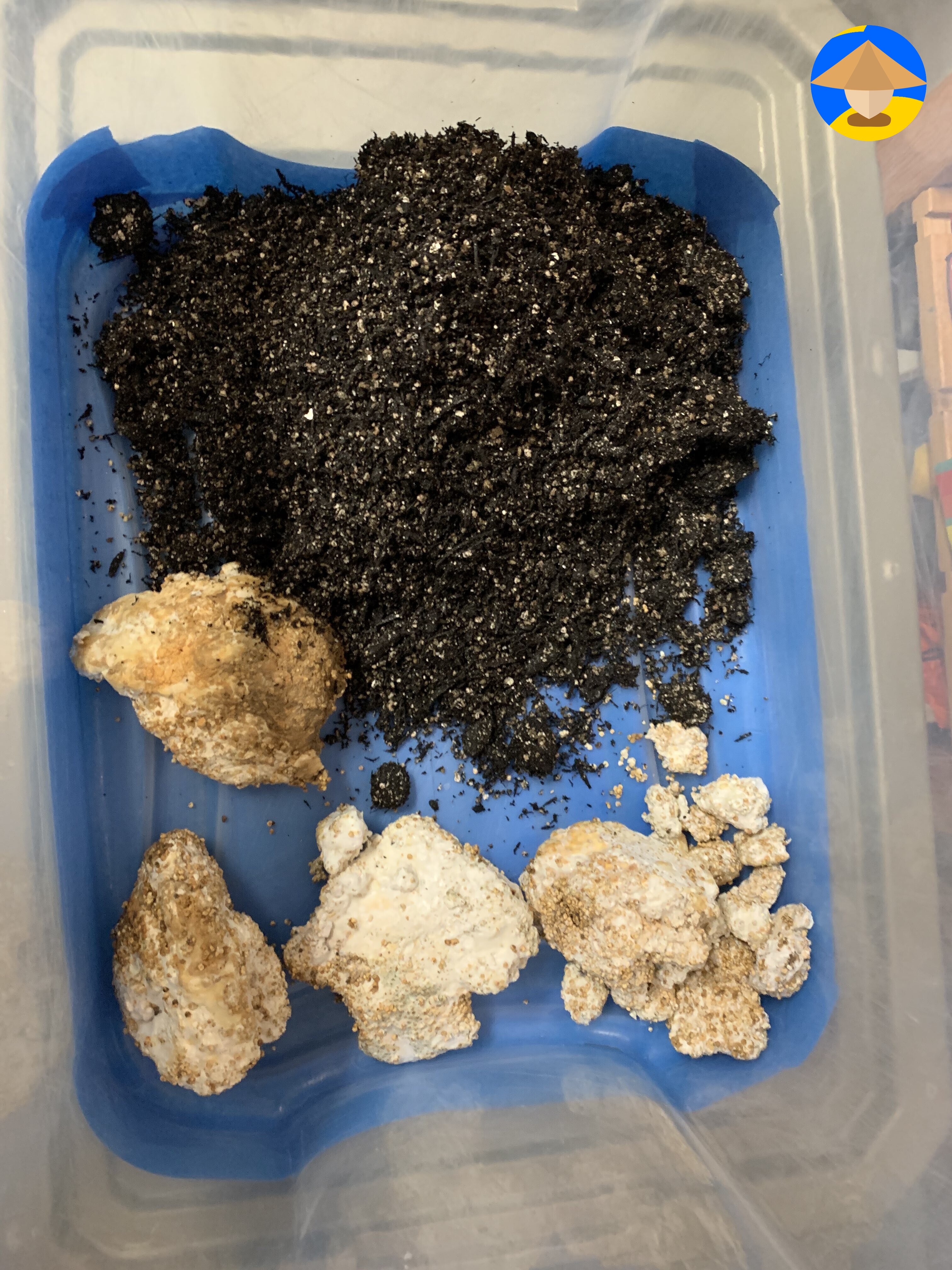
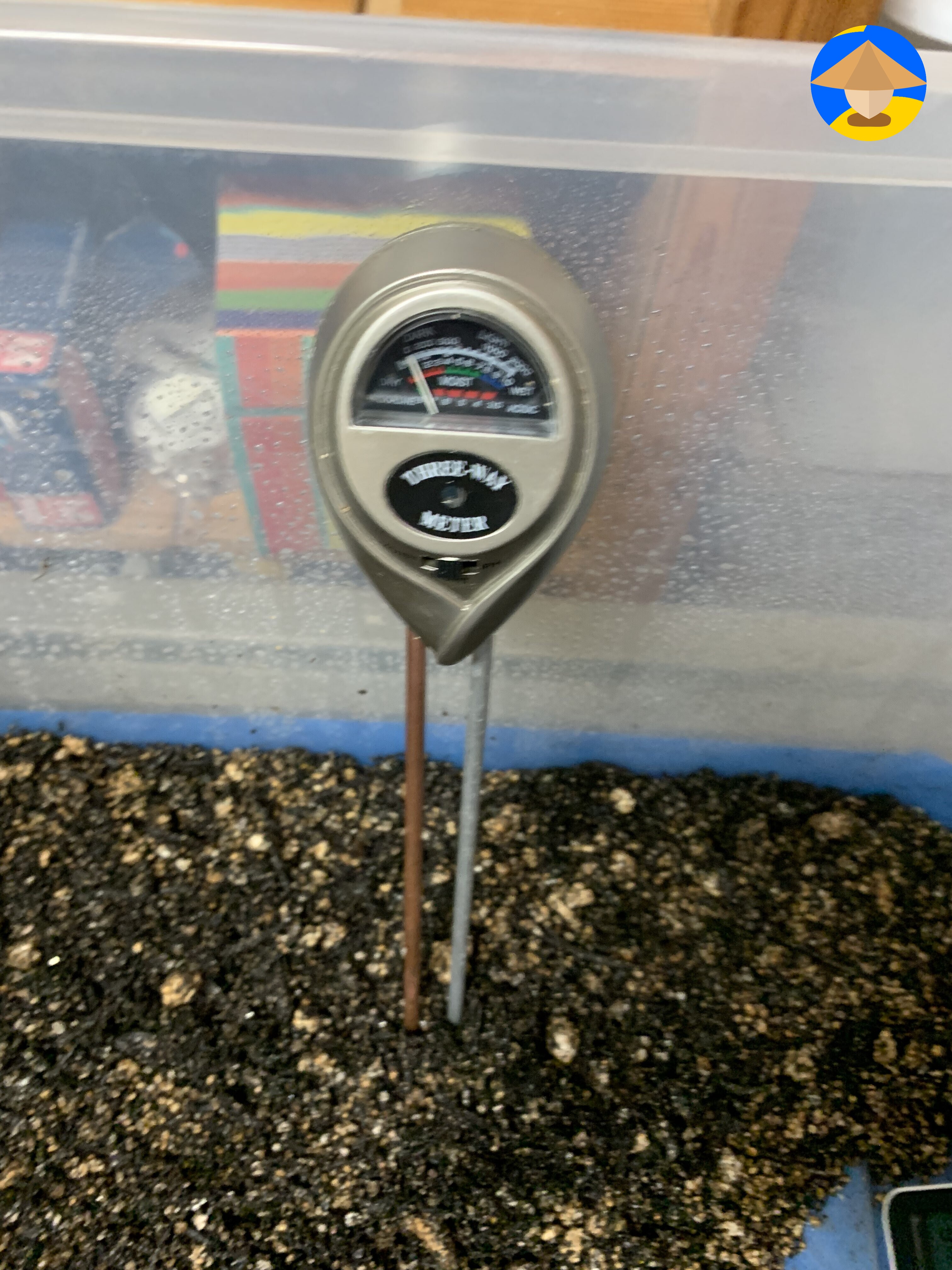
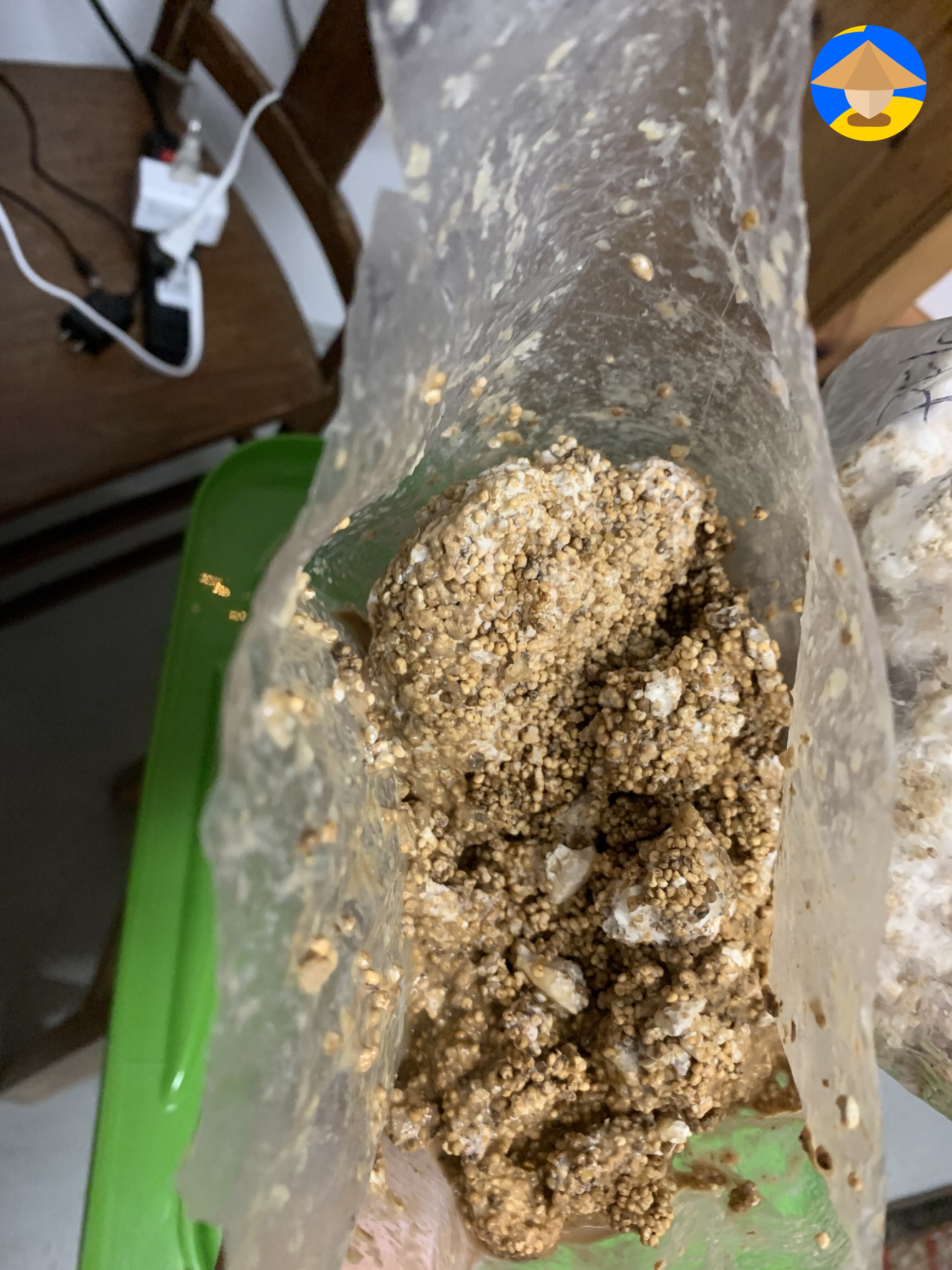
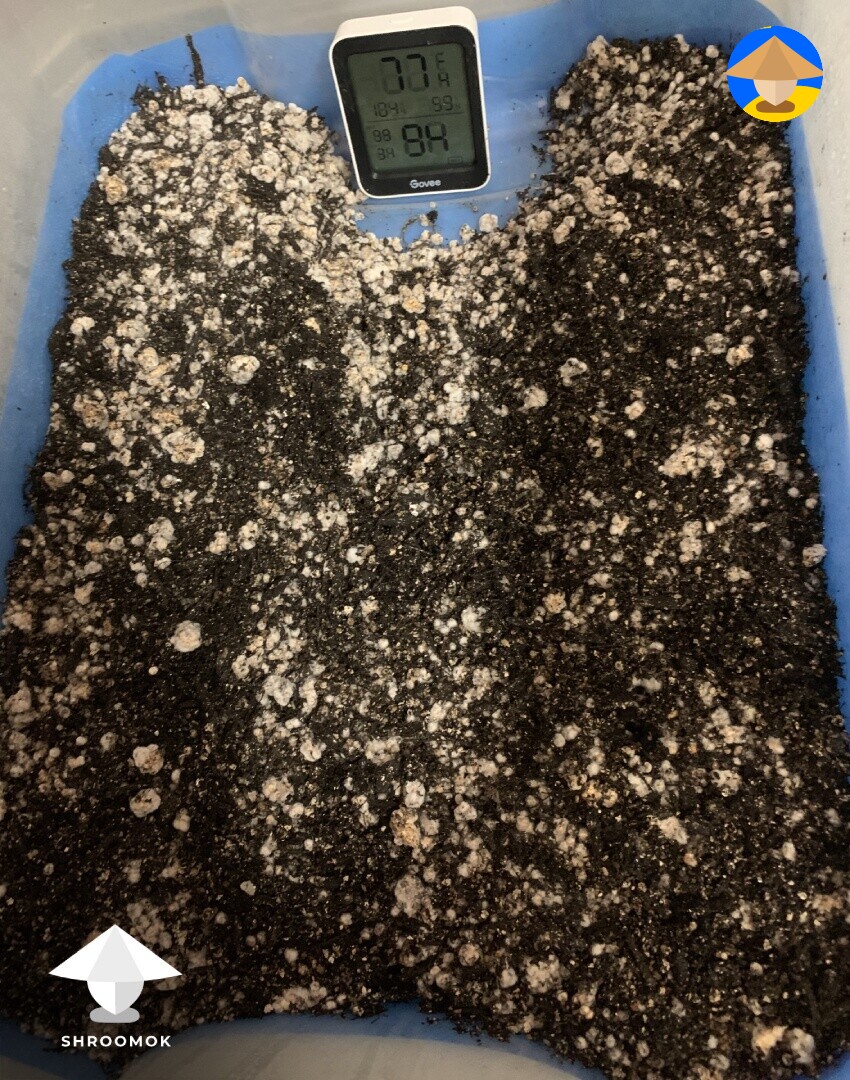
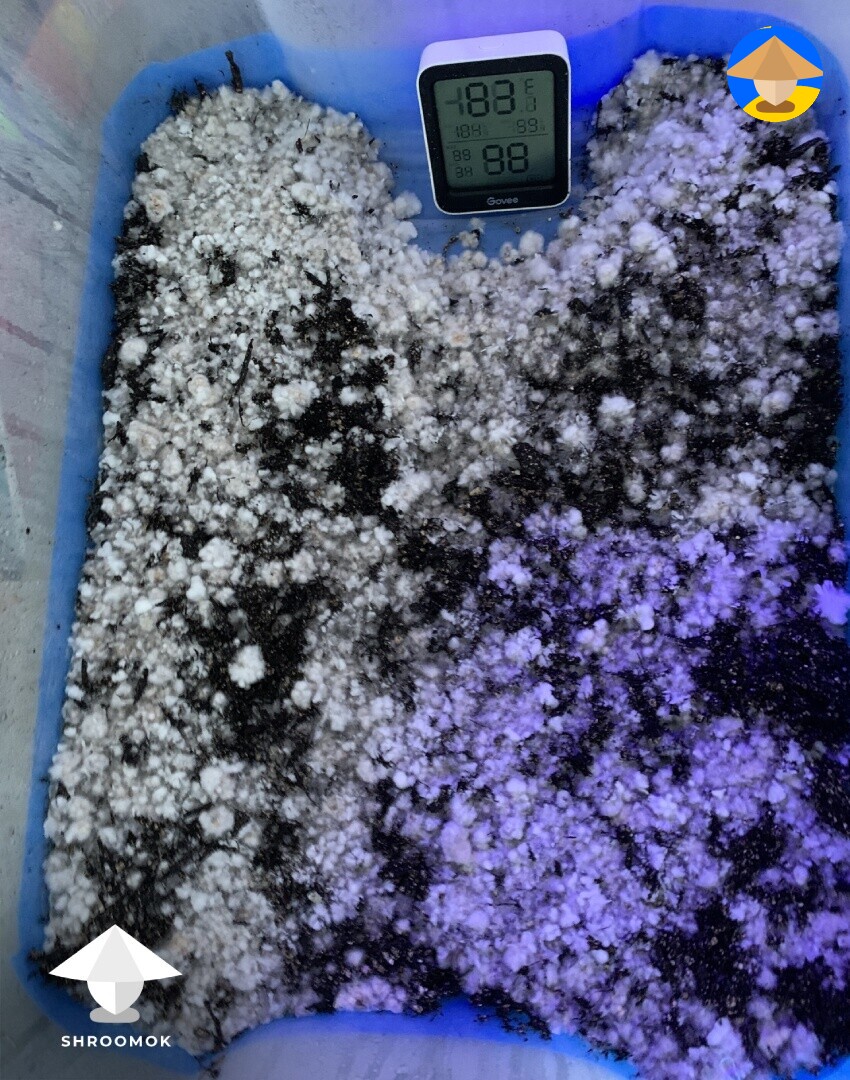
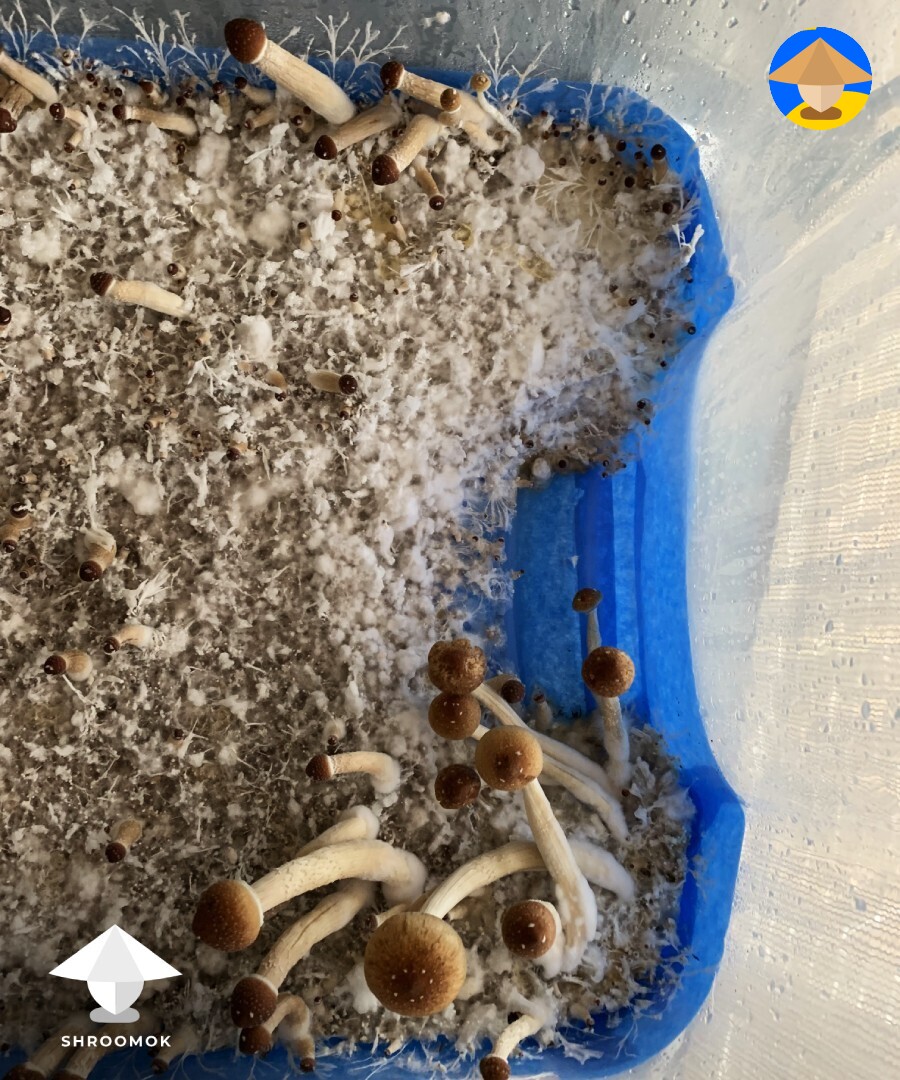
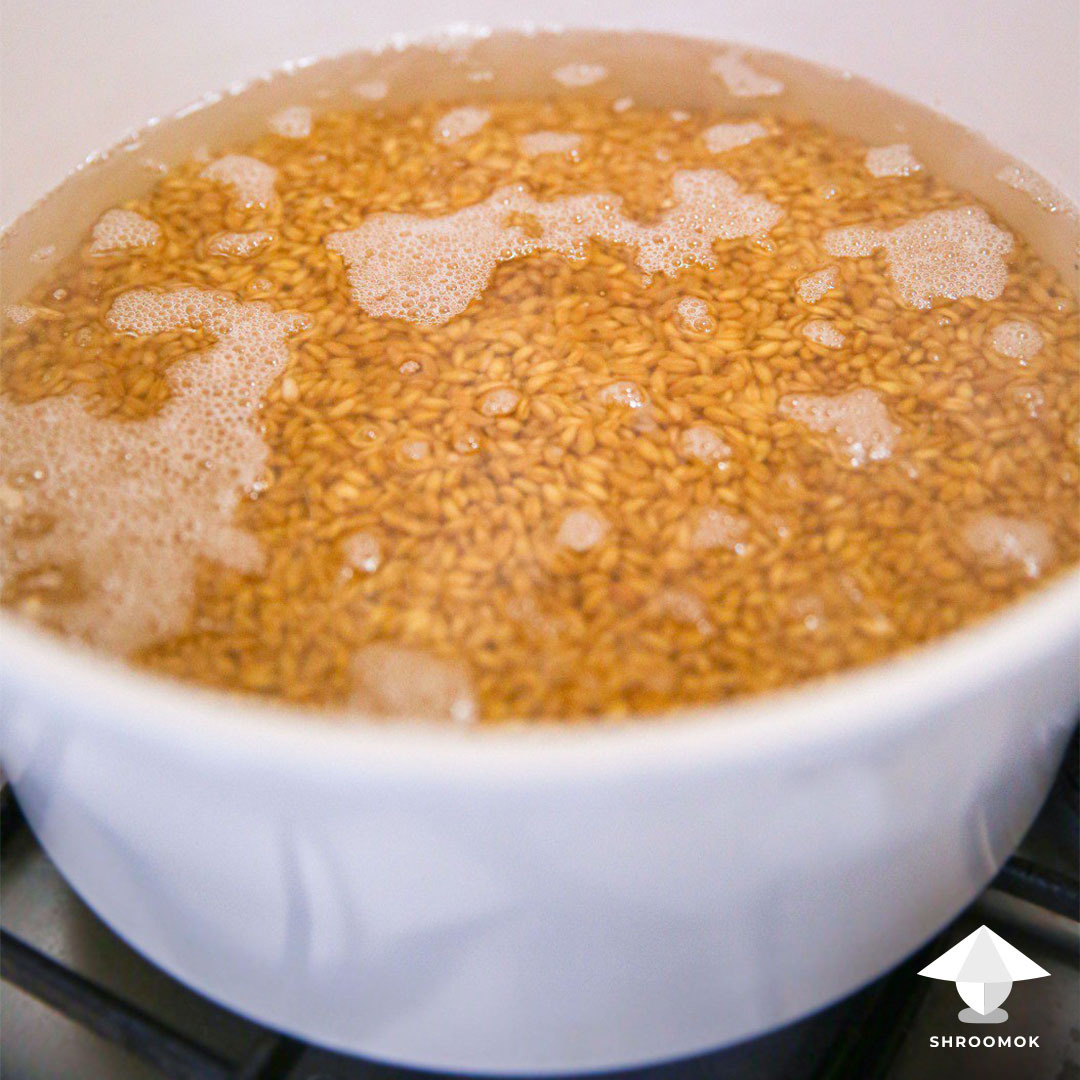
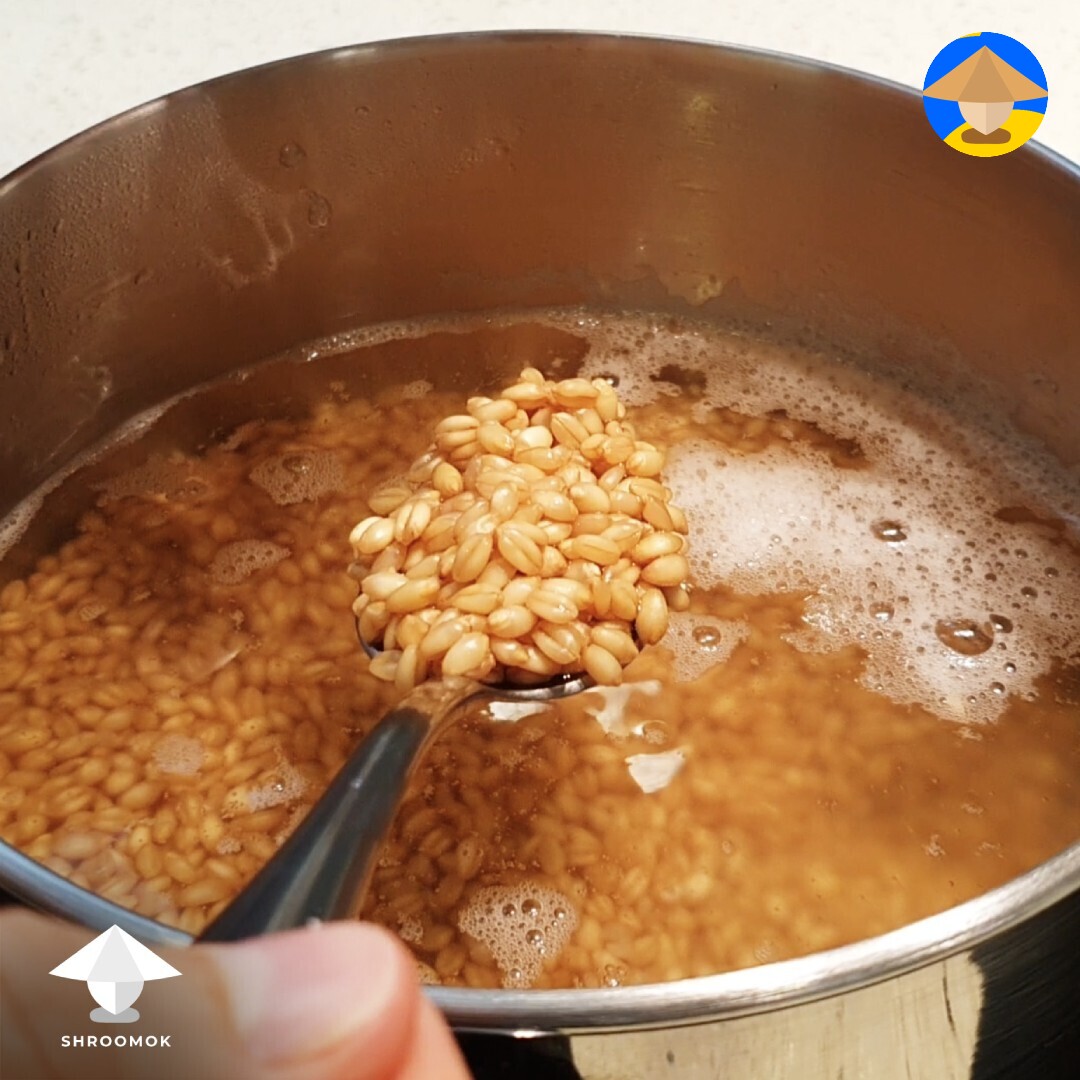
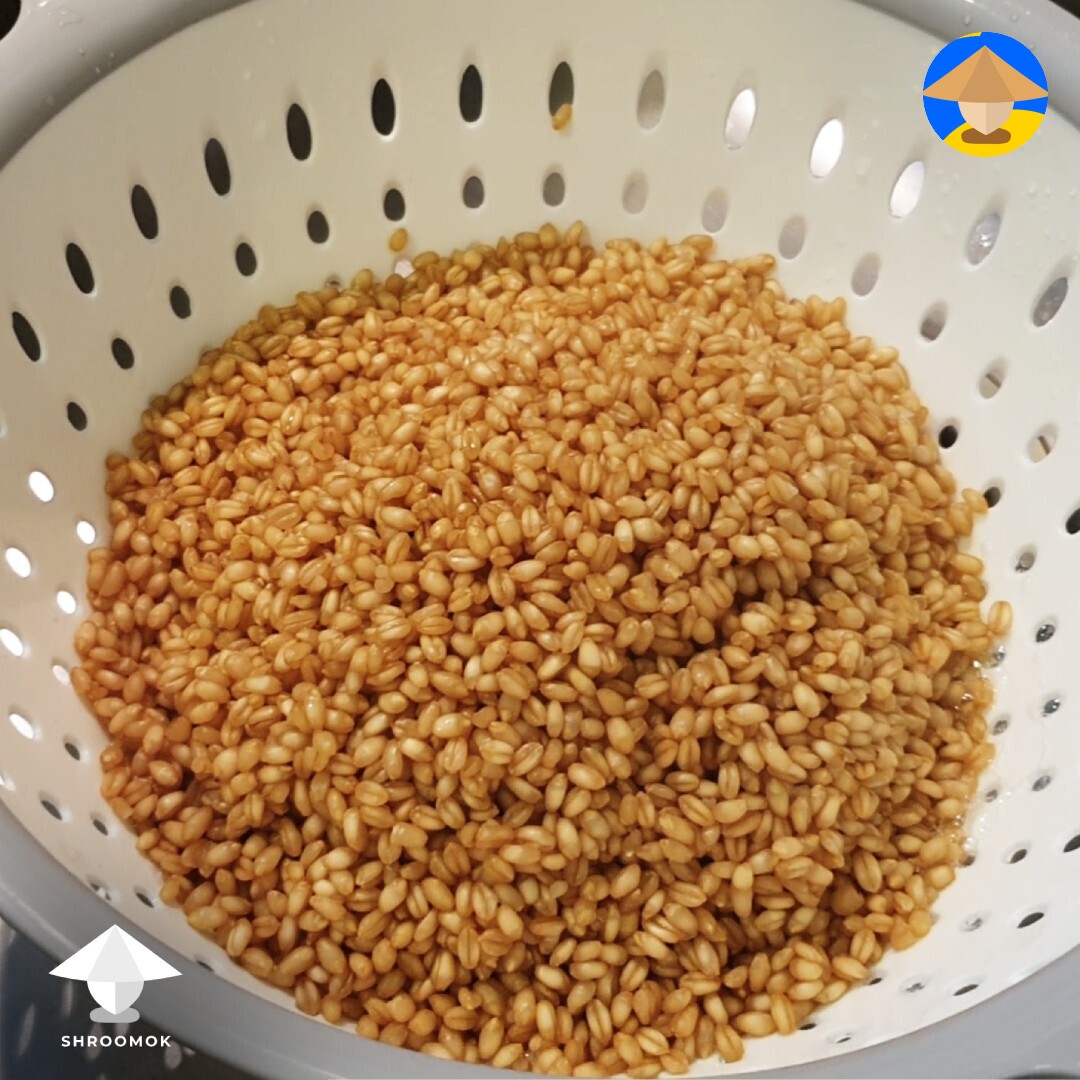
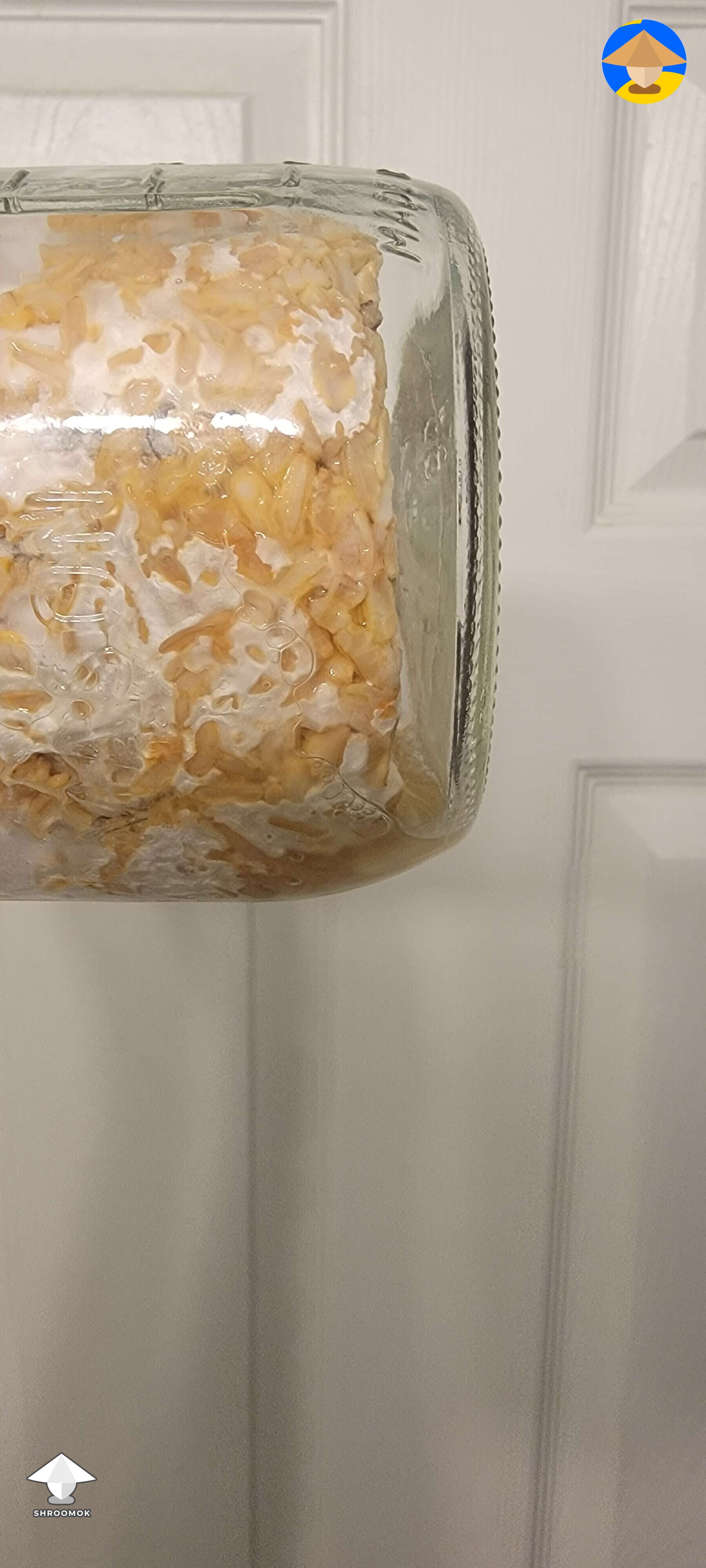
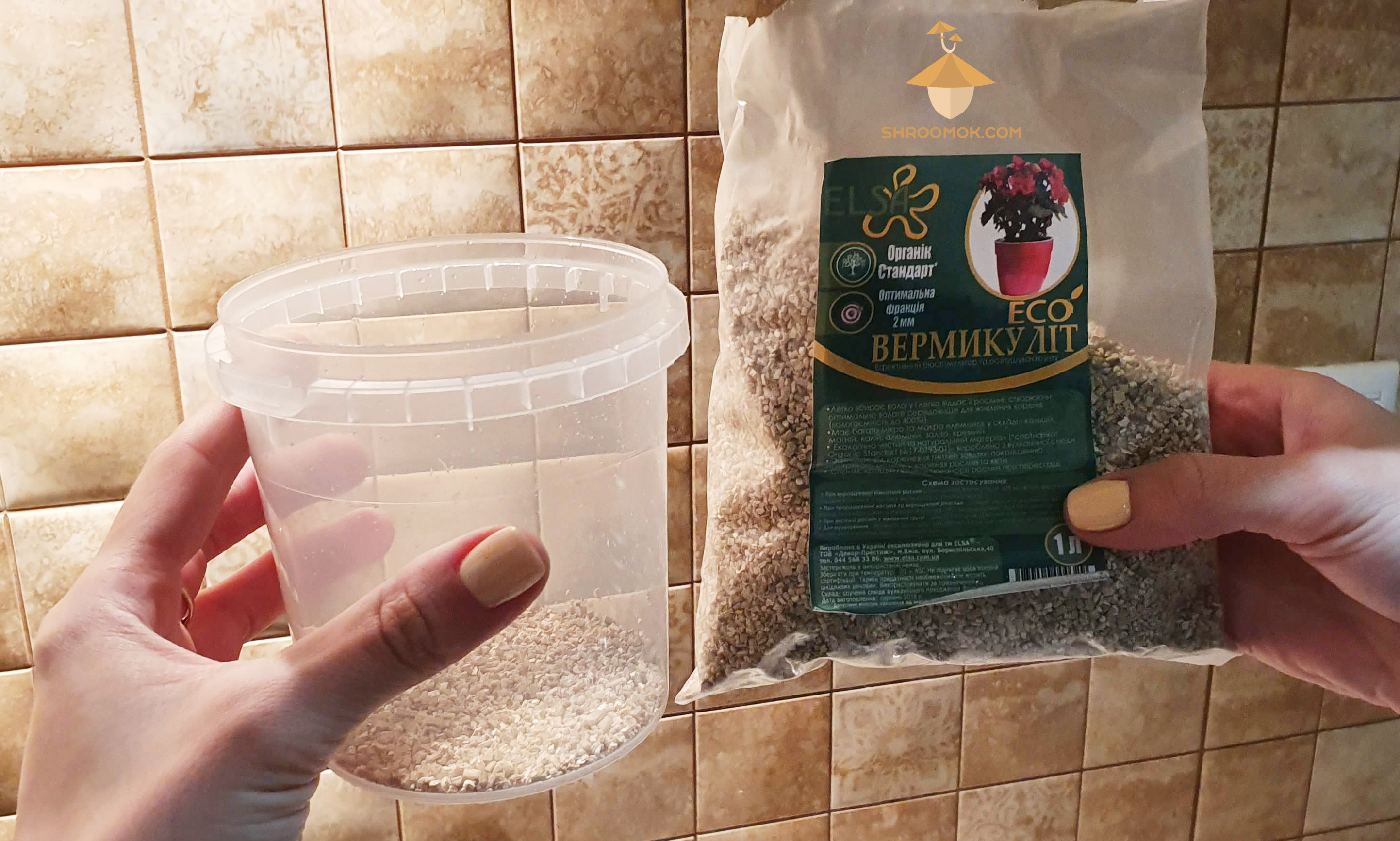
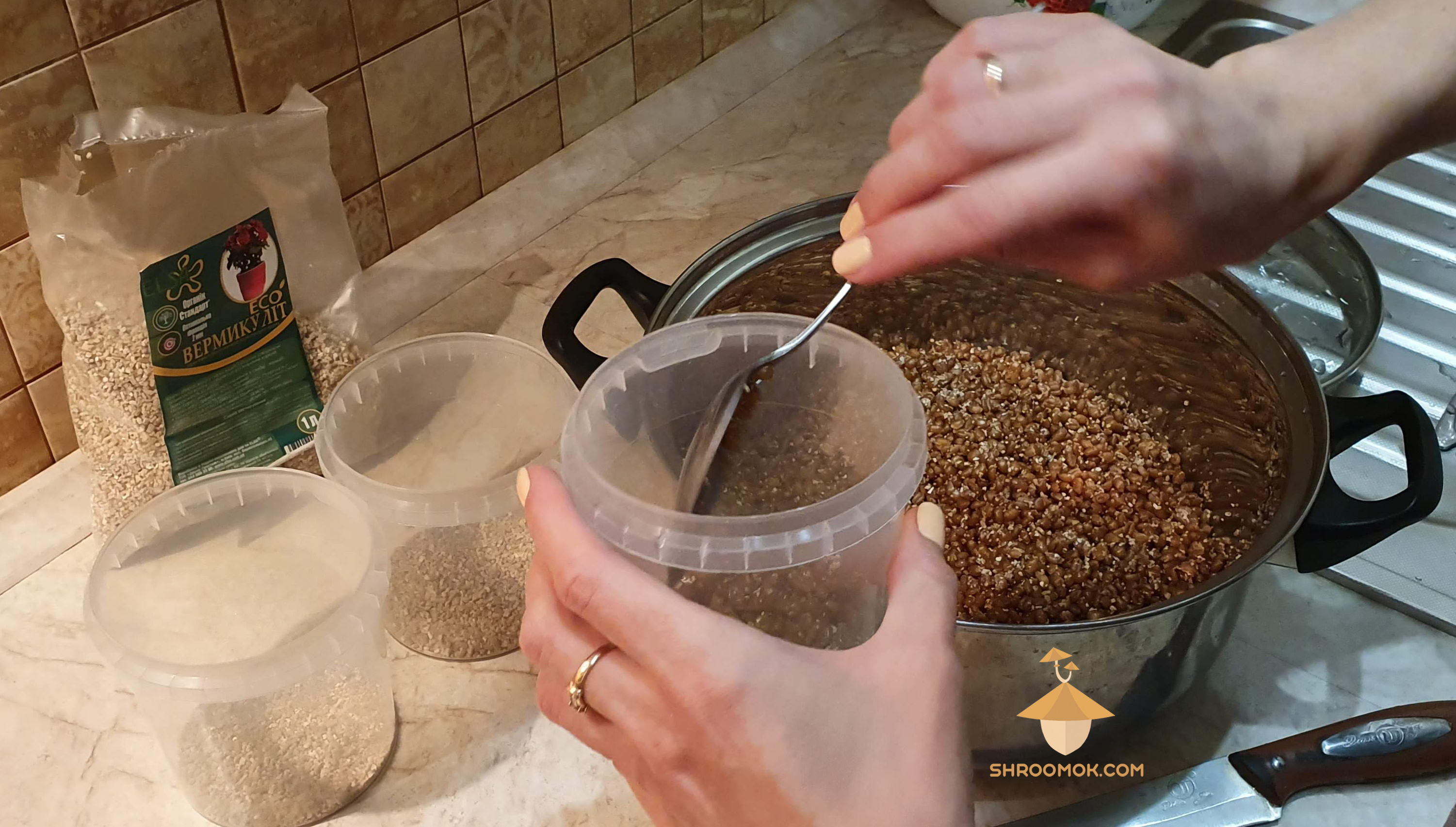
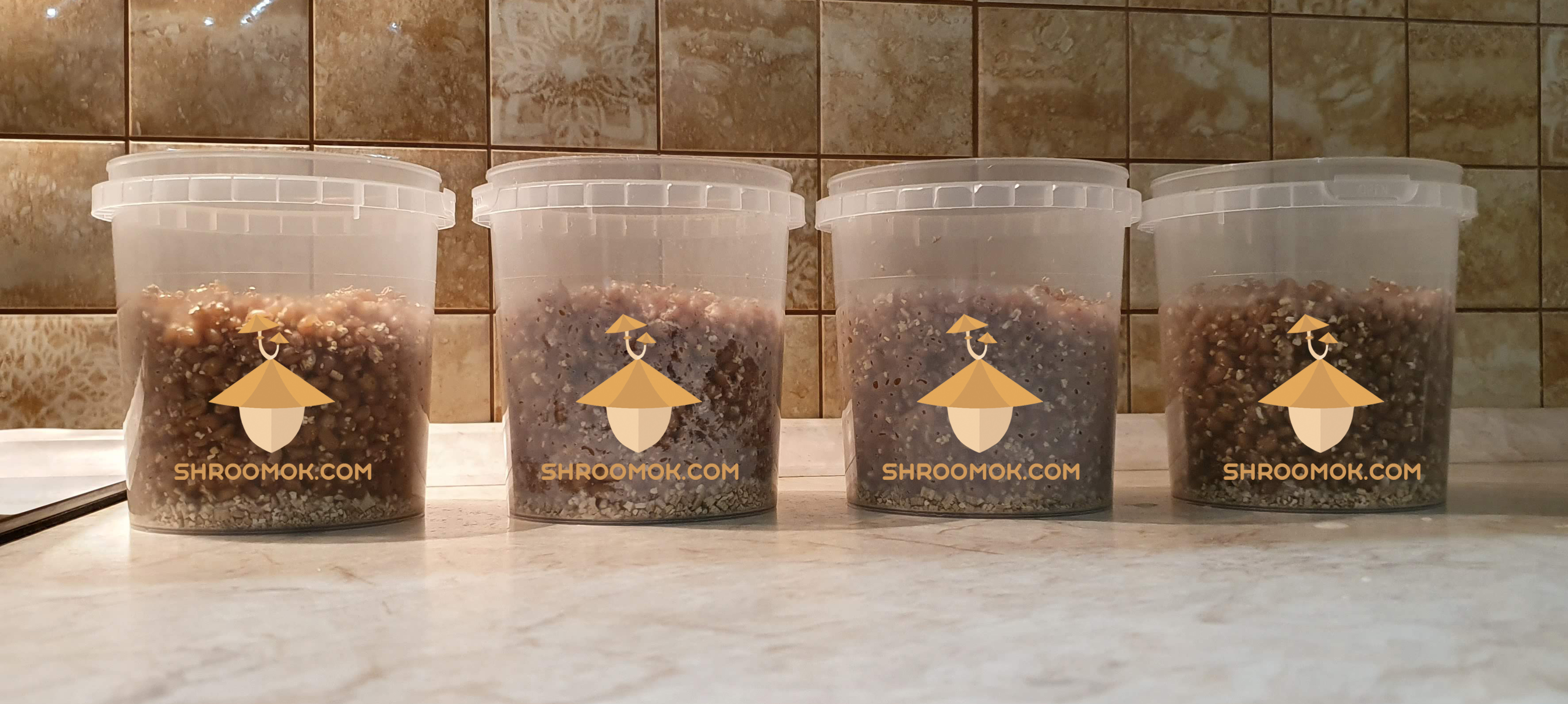

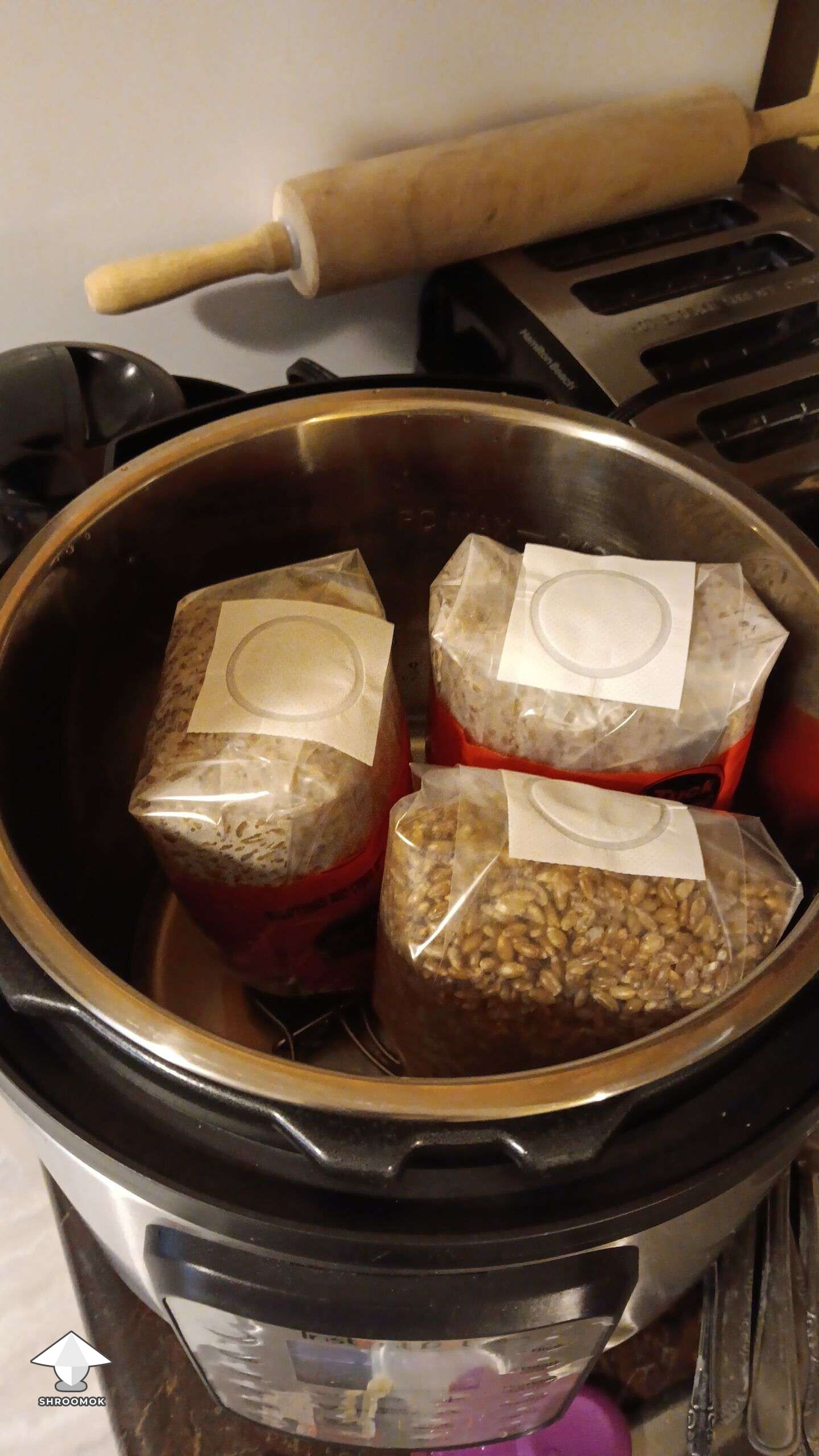
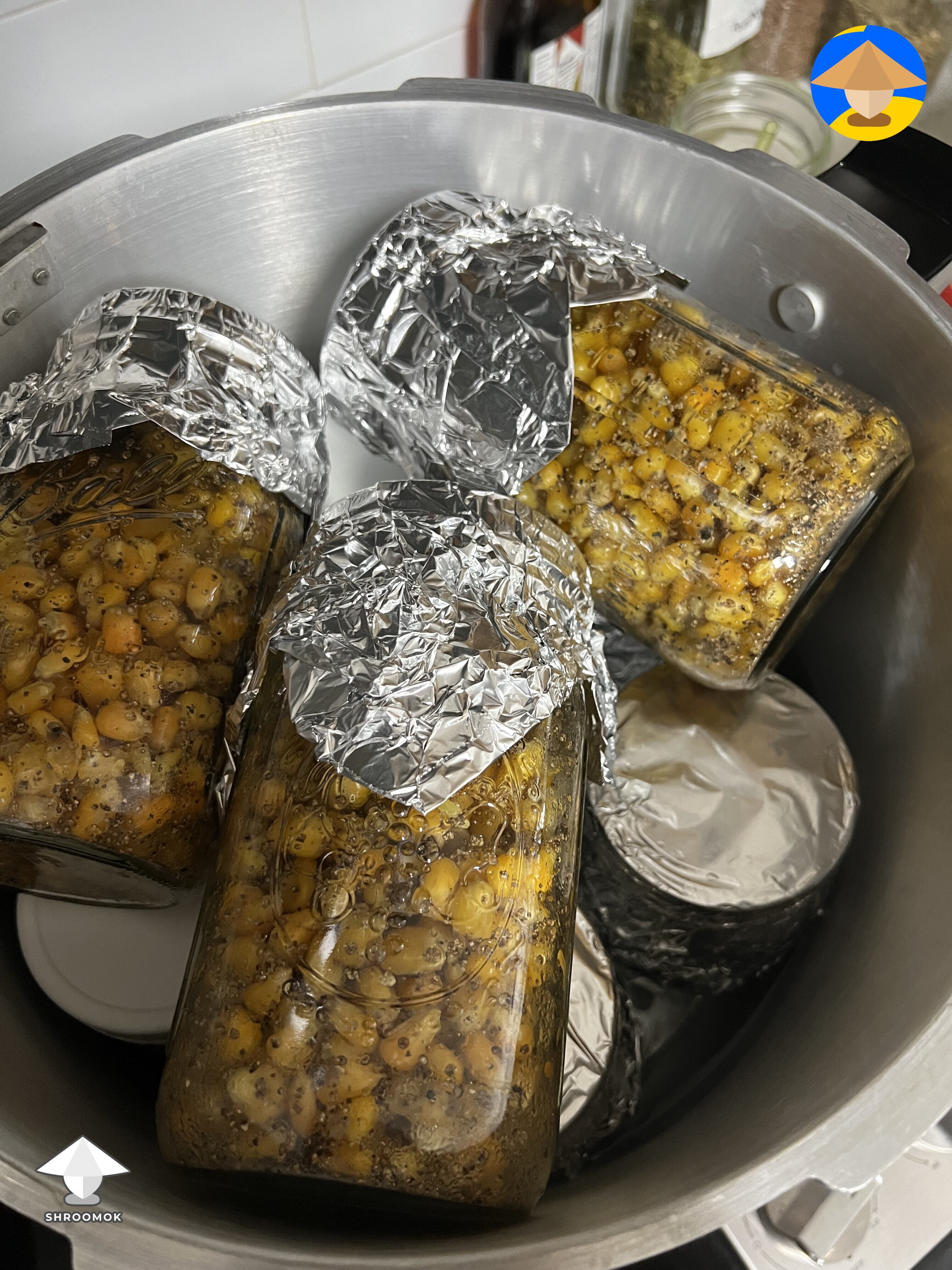

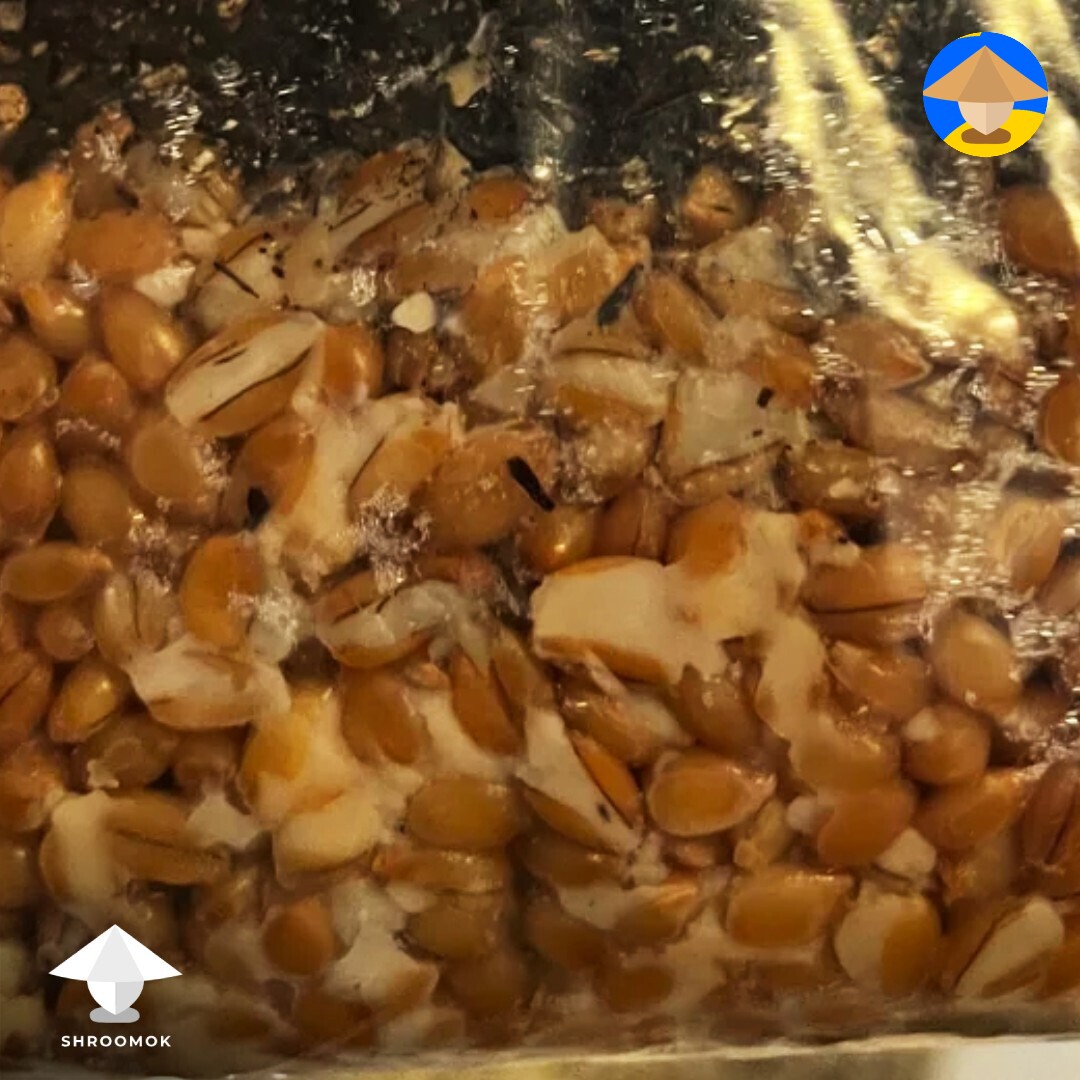
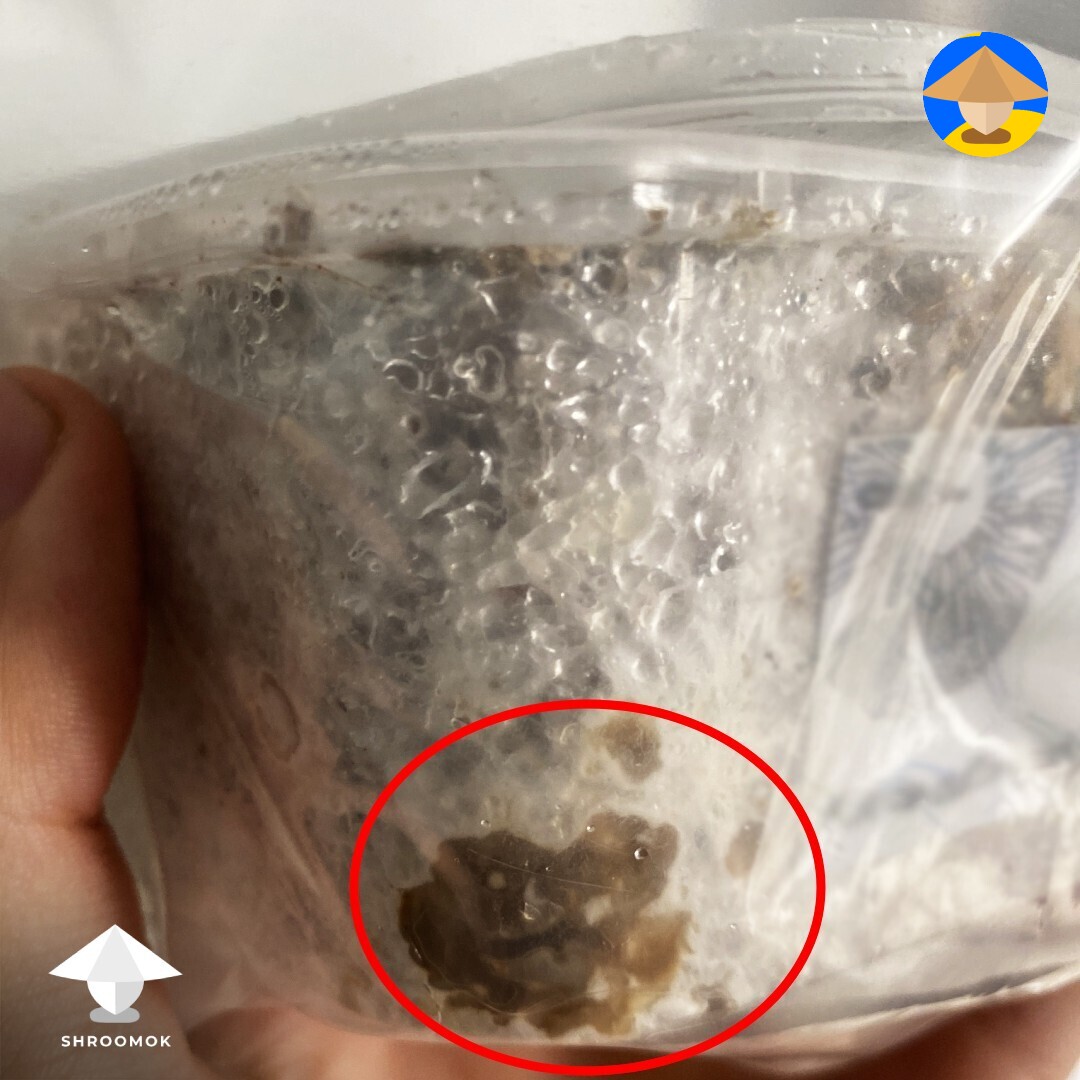
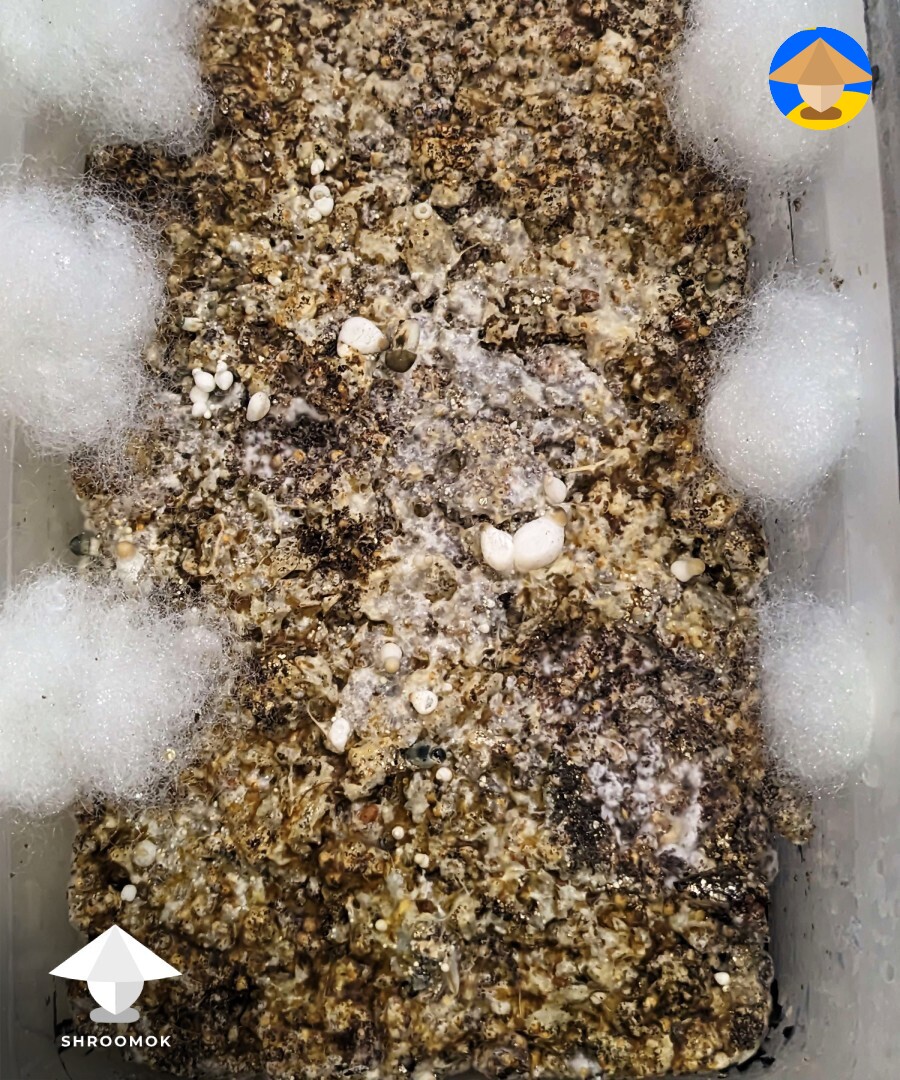
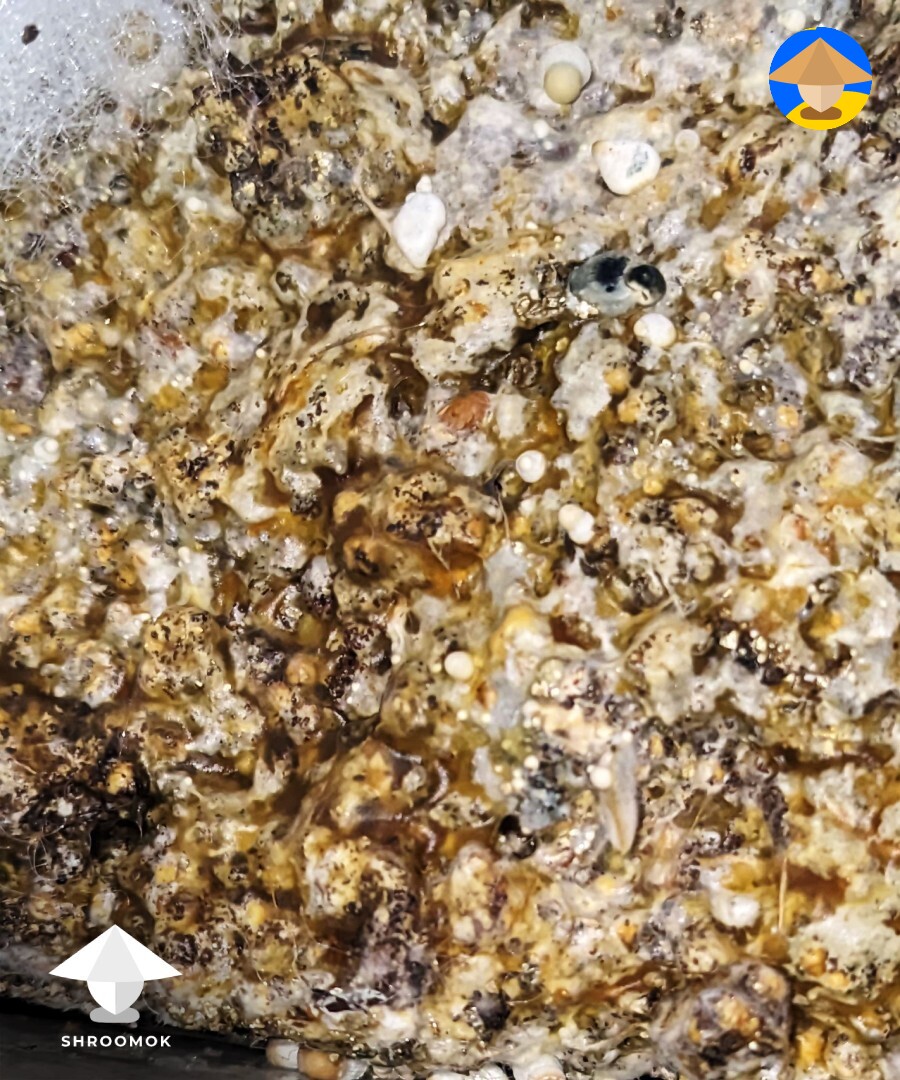
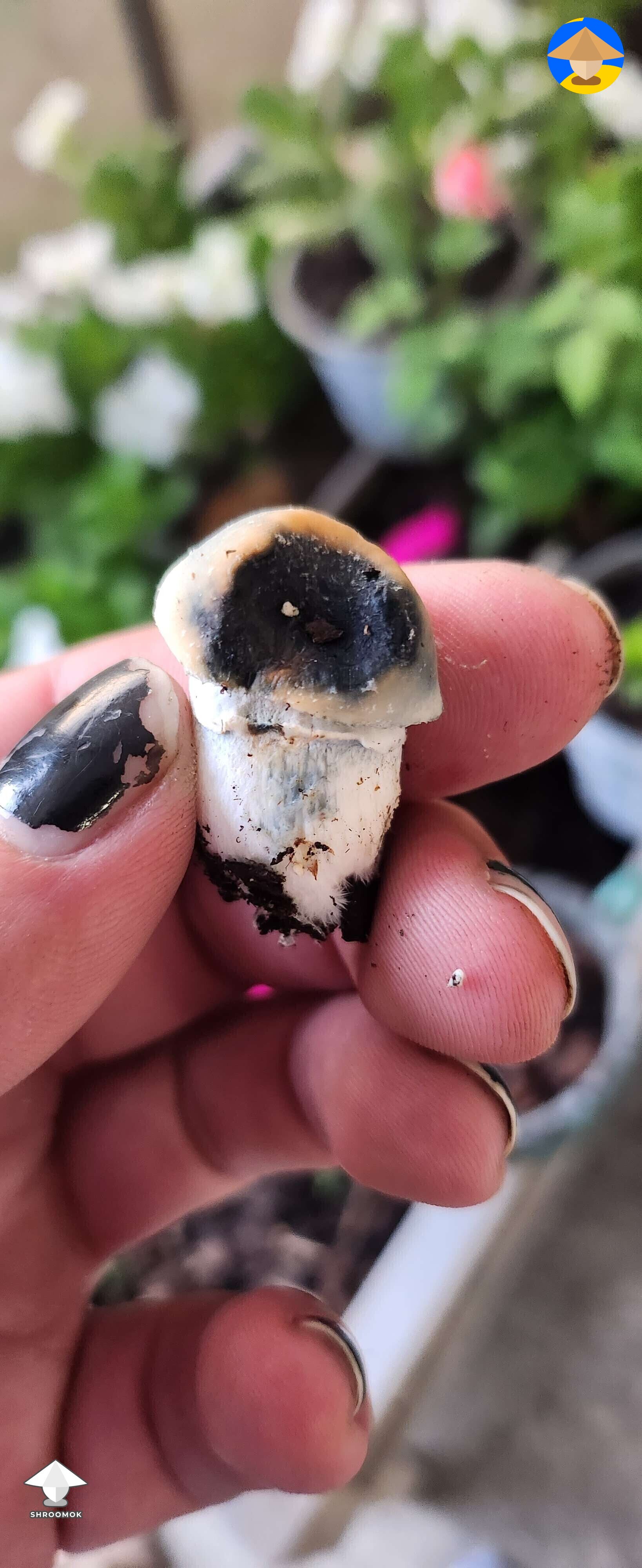

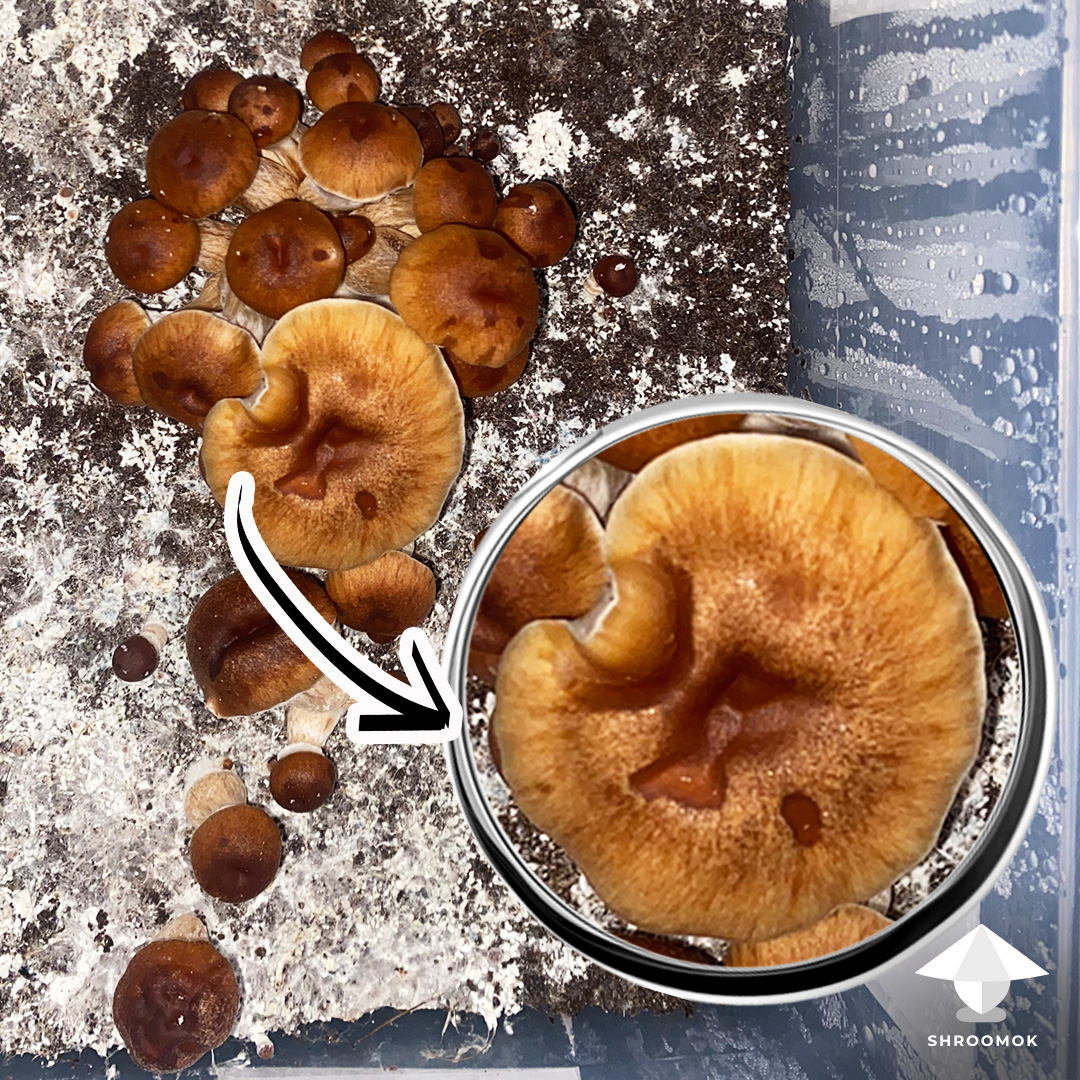
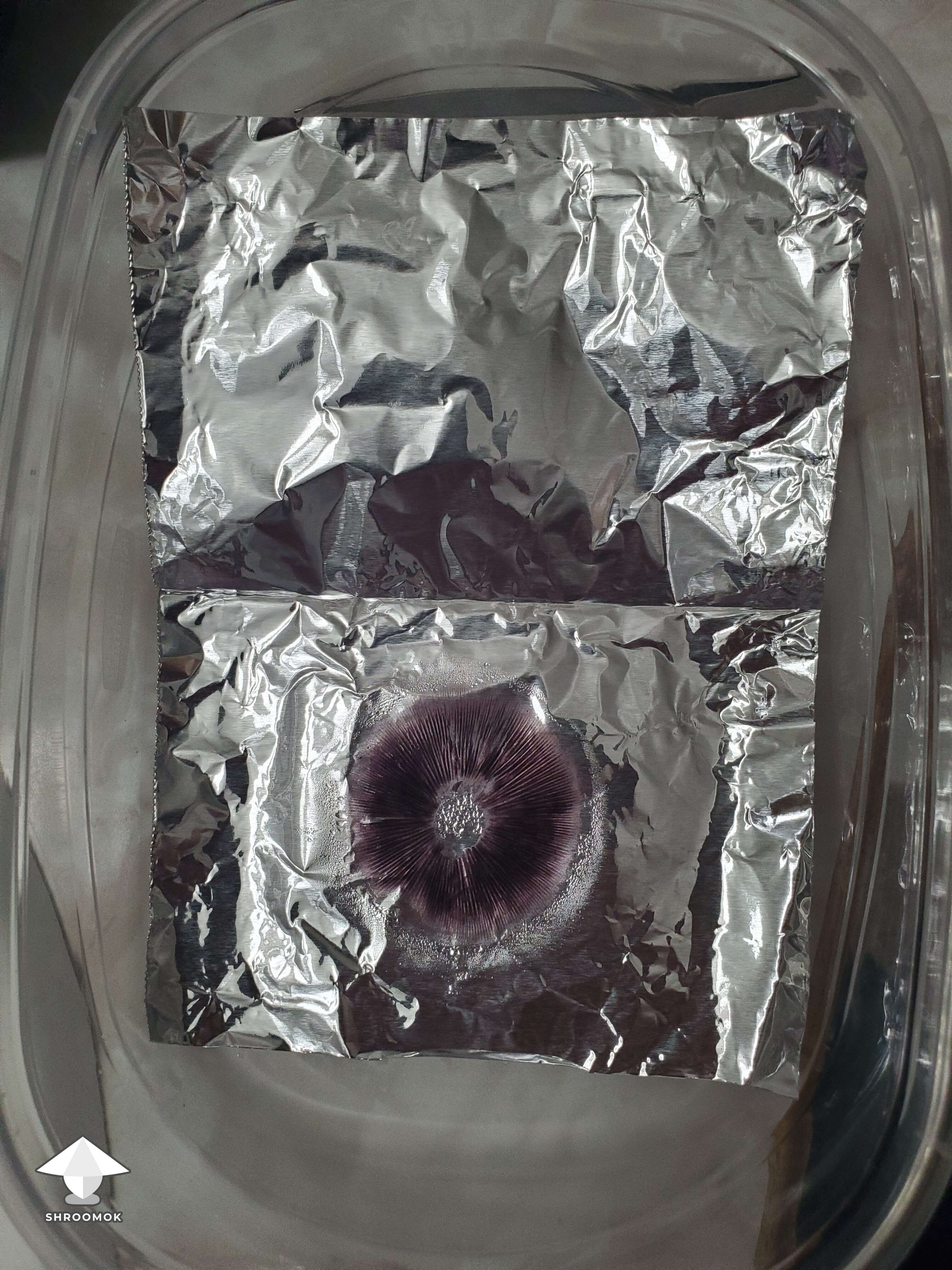
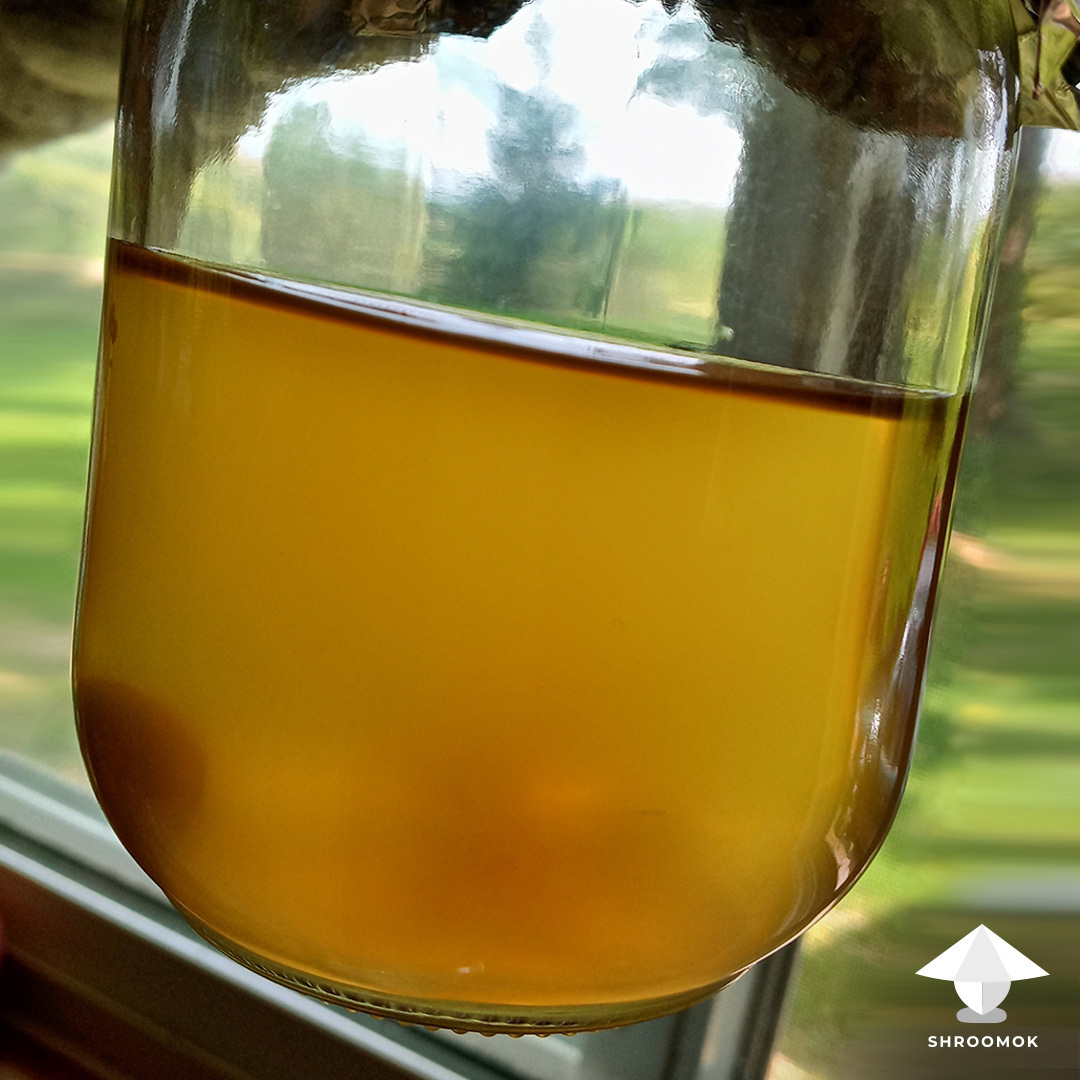

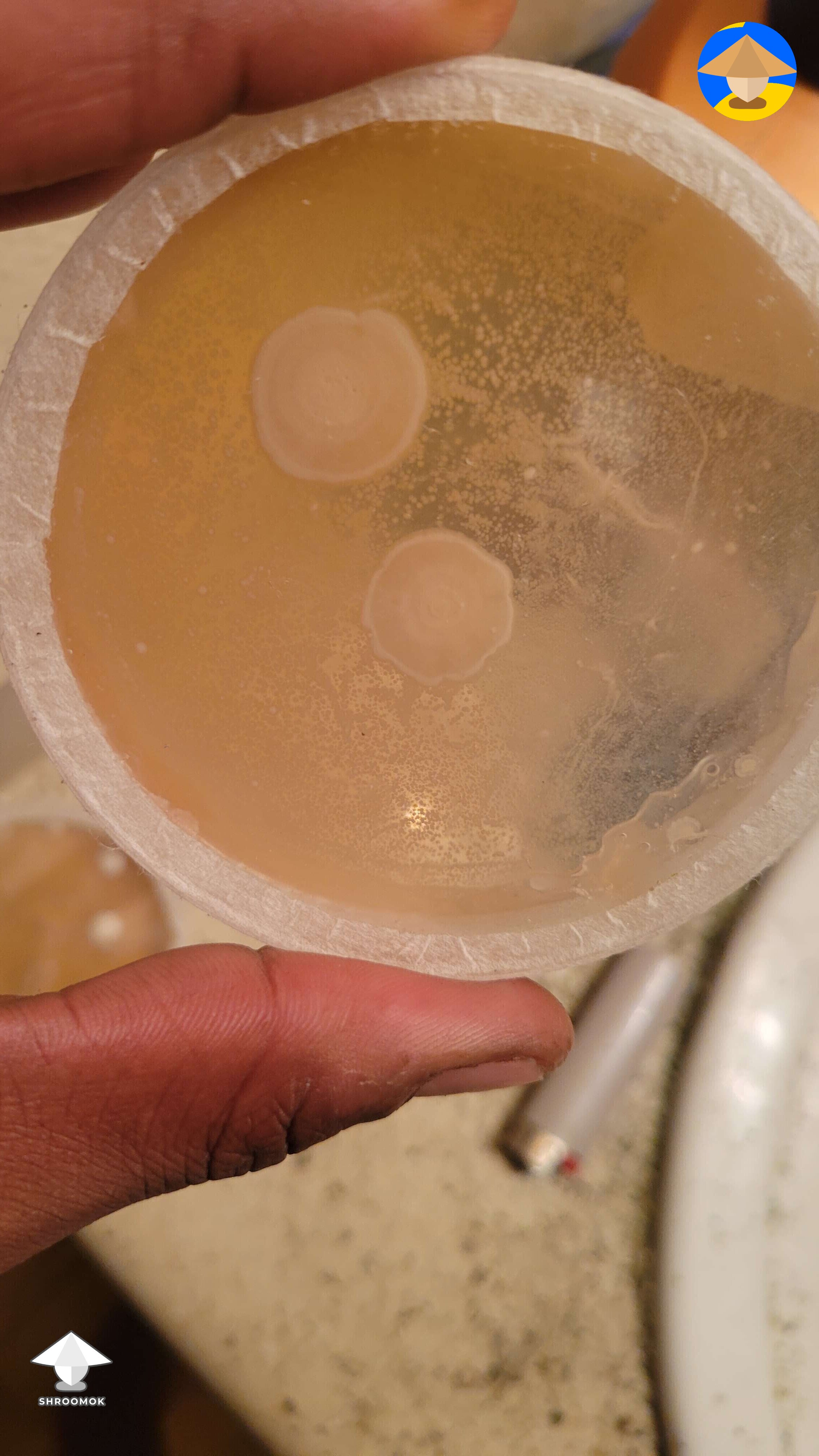
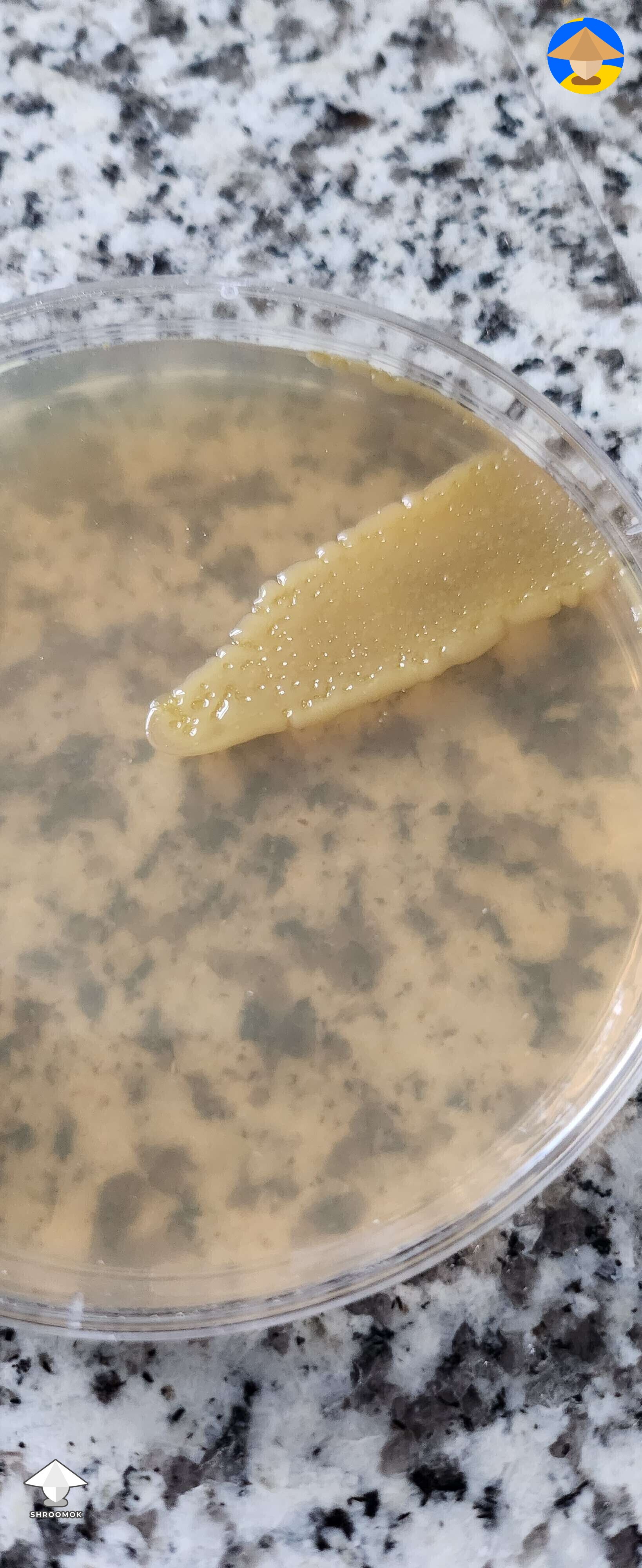

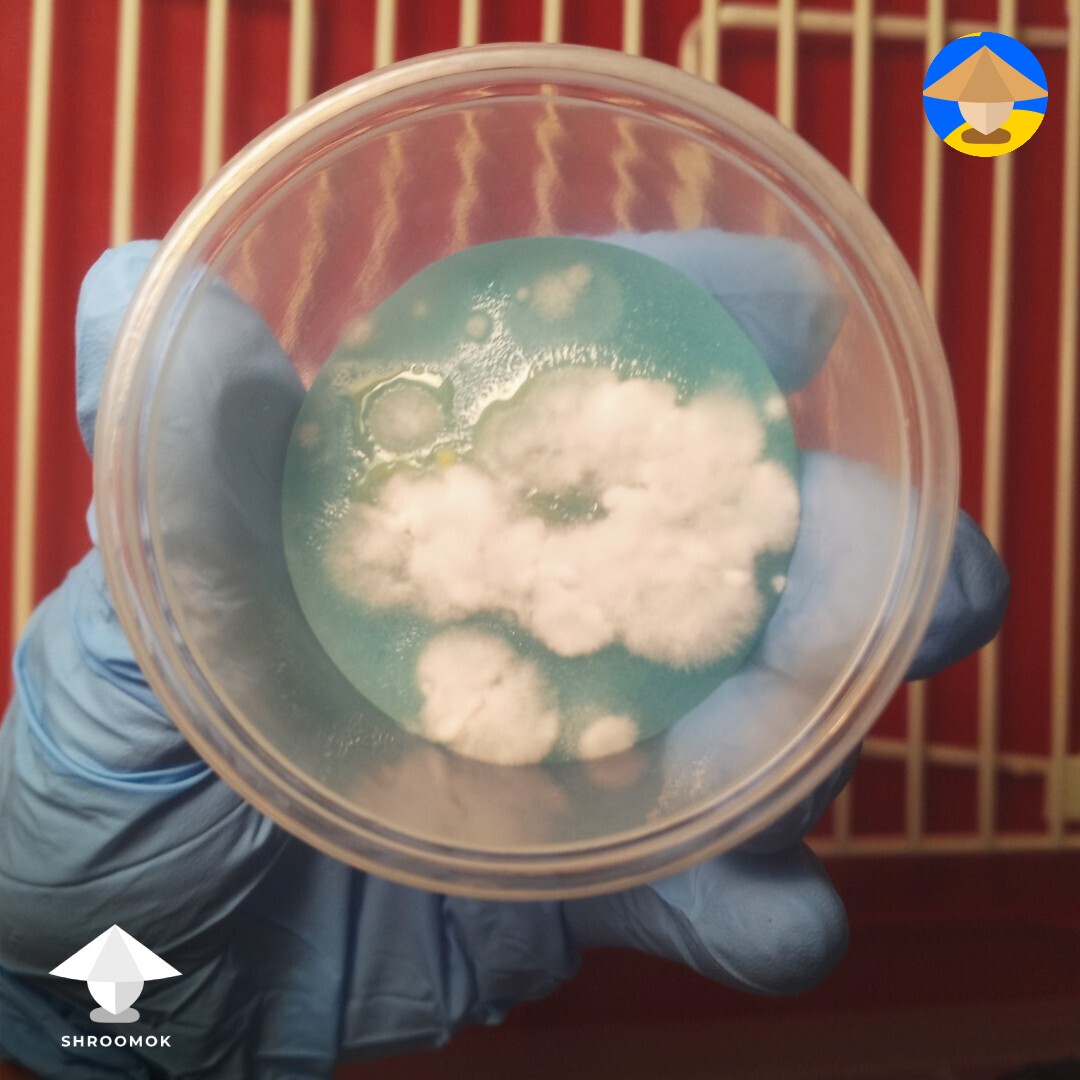
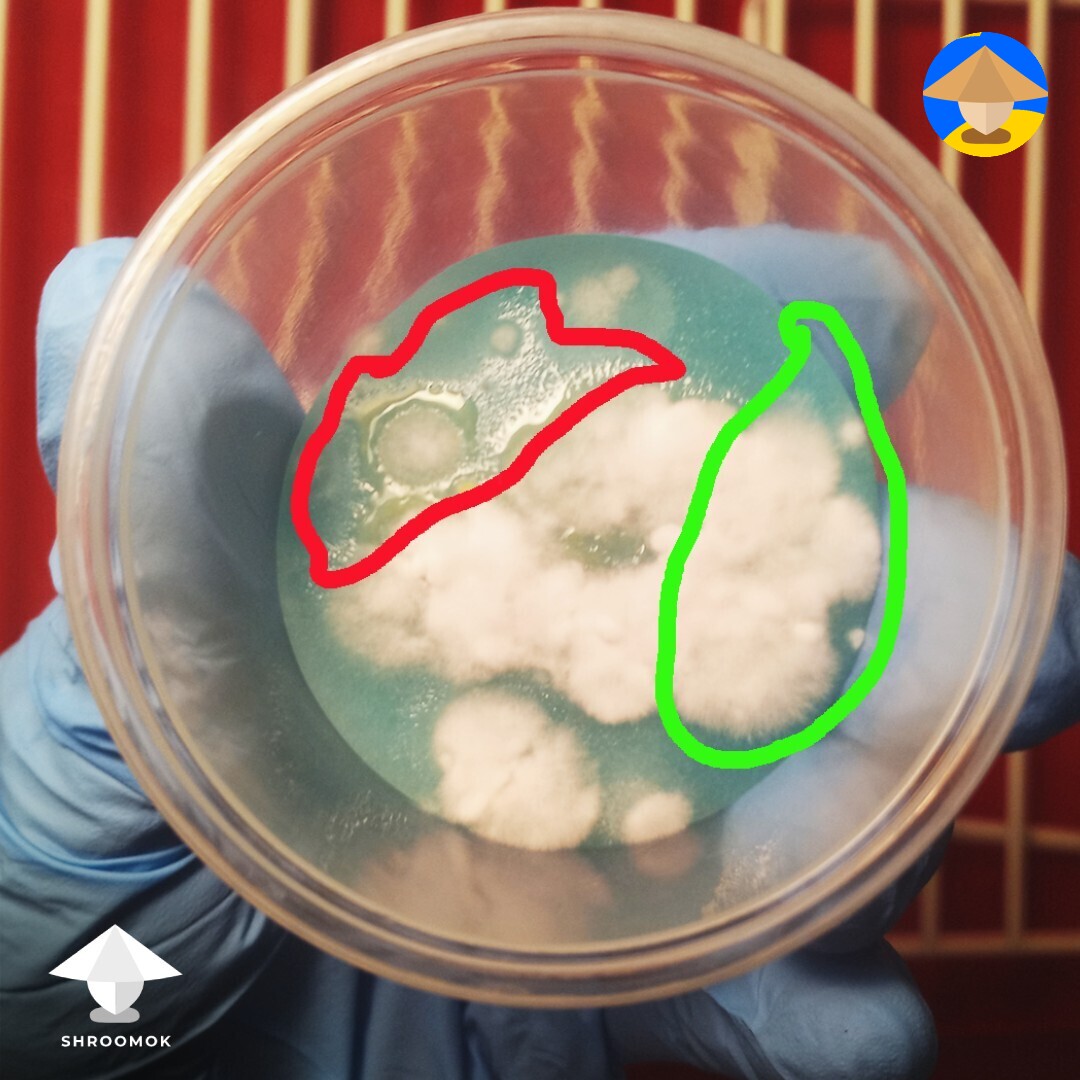
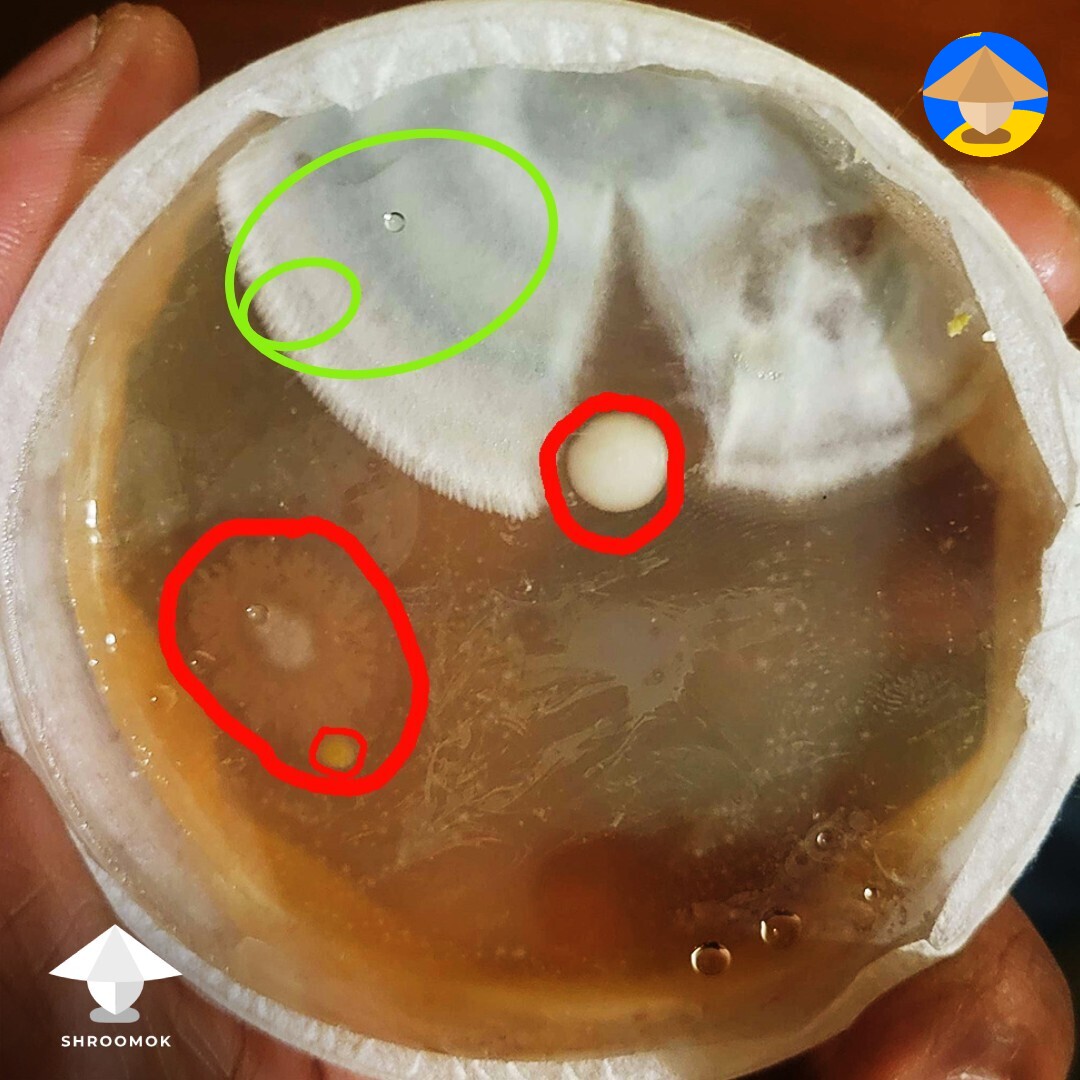
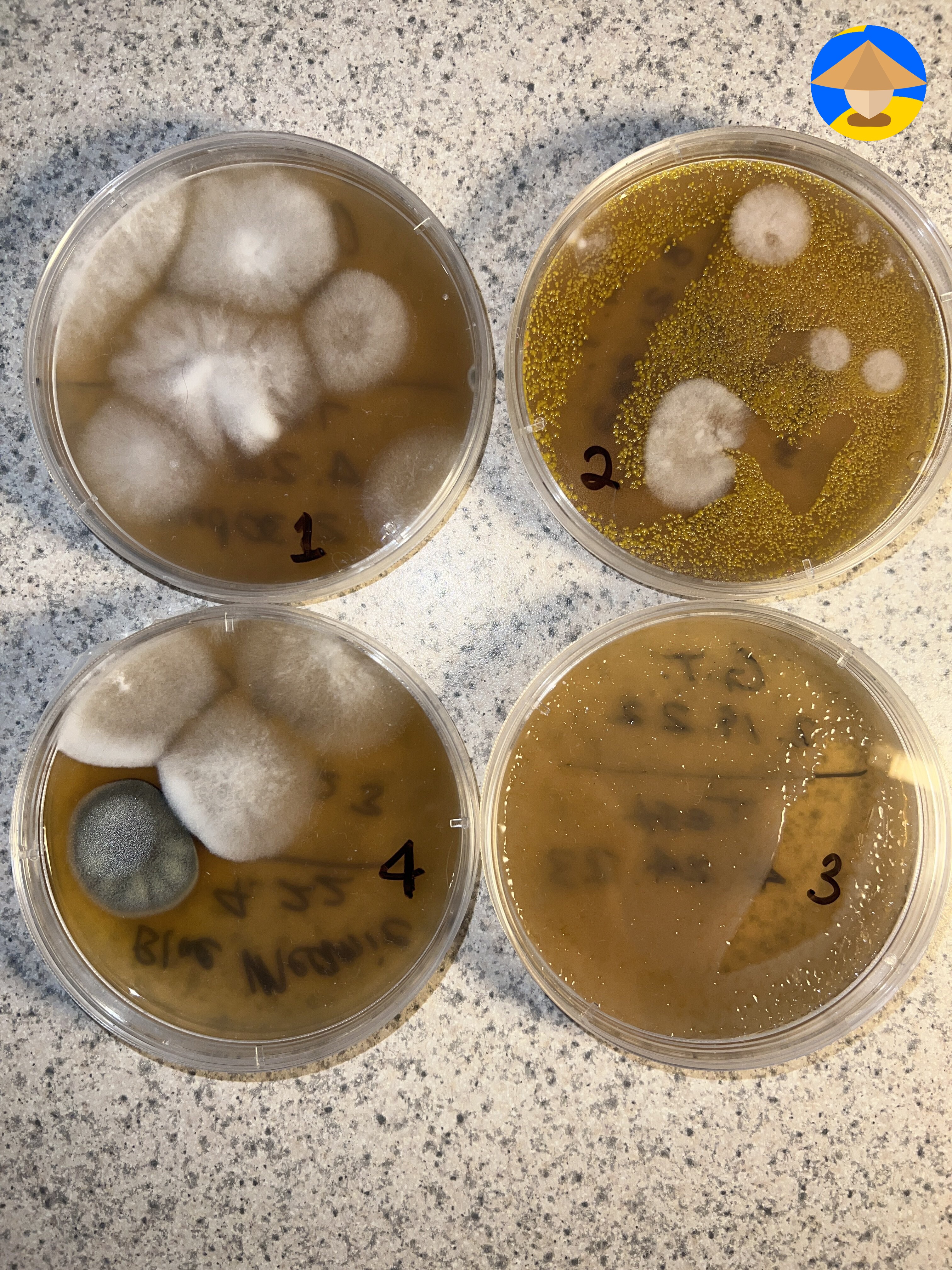
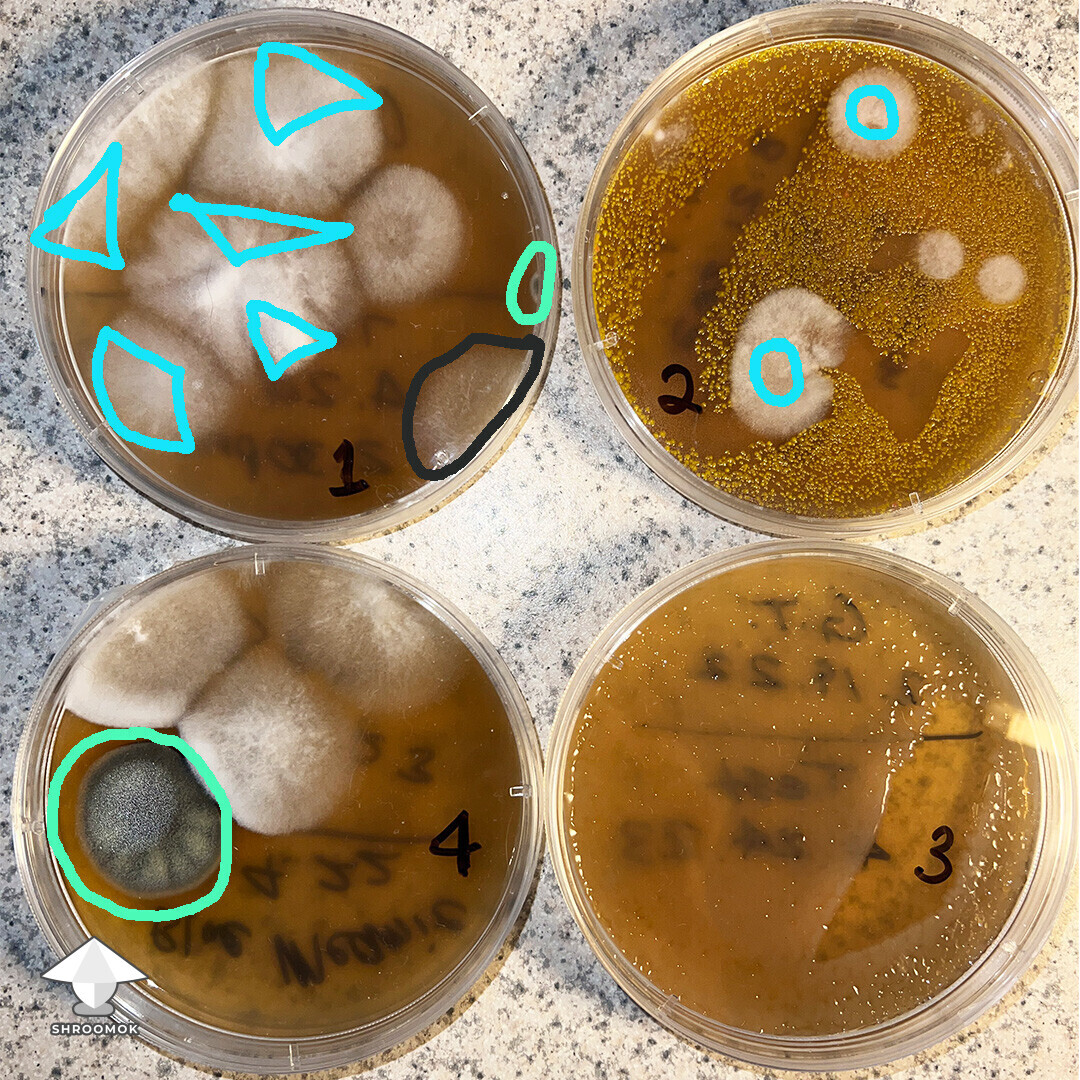
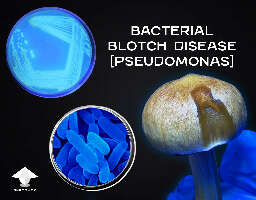
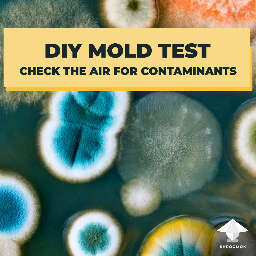
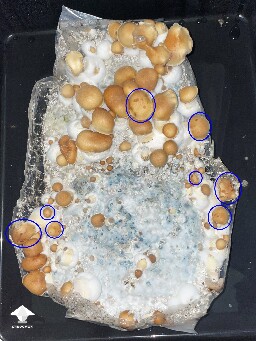
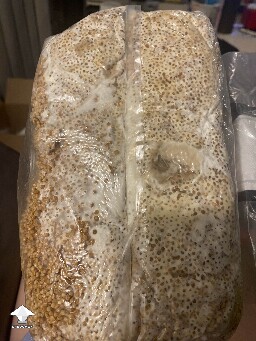
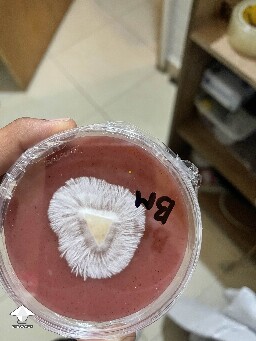
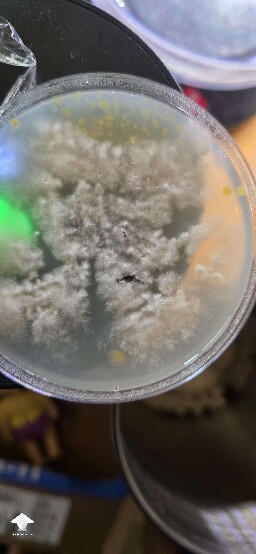
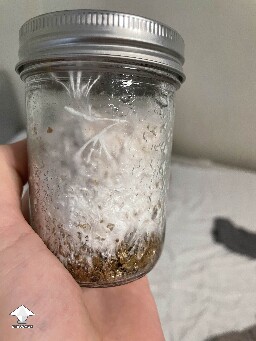
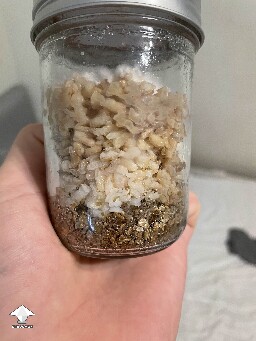
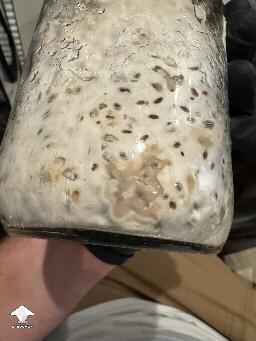
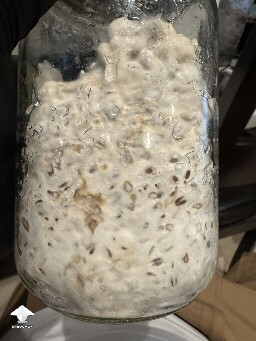
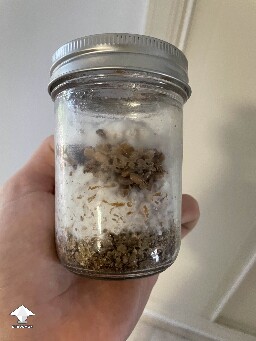
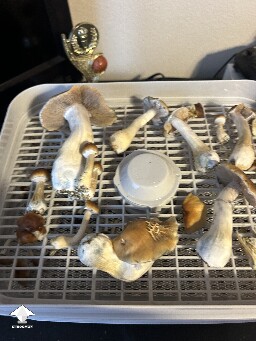

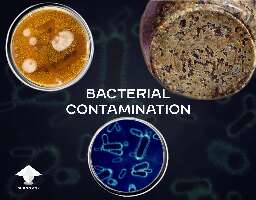
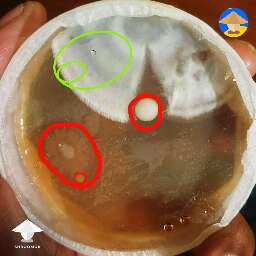
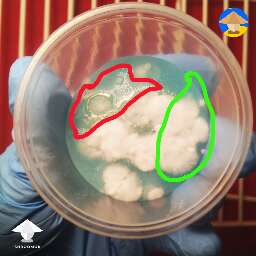
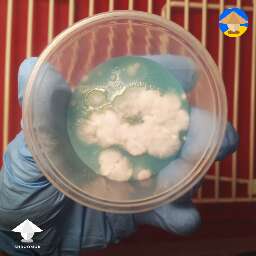
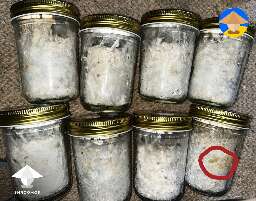
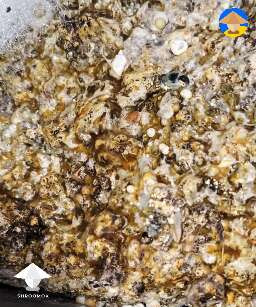
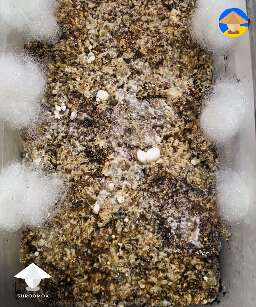
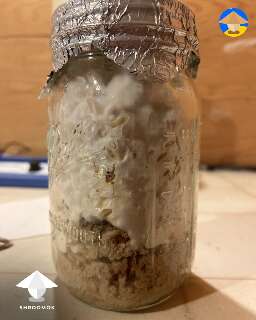
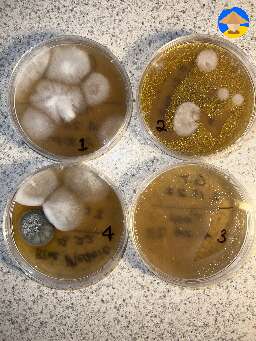
Comments
Add comment